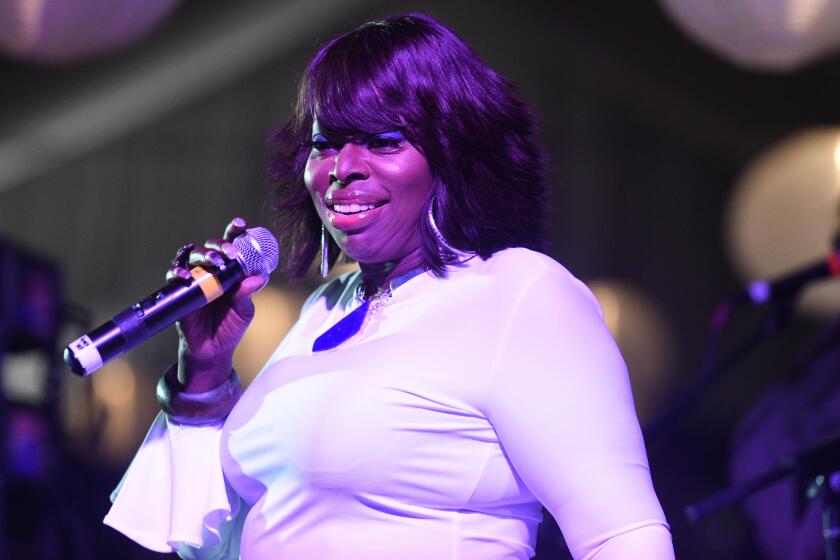‘Bill Graham and the Rock & Roll Revolution’
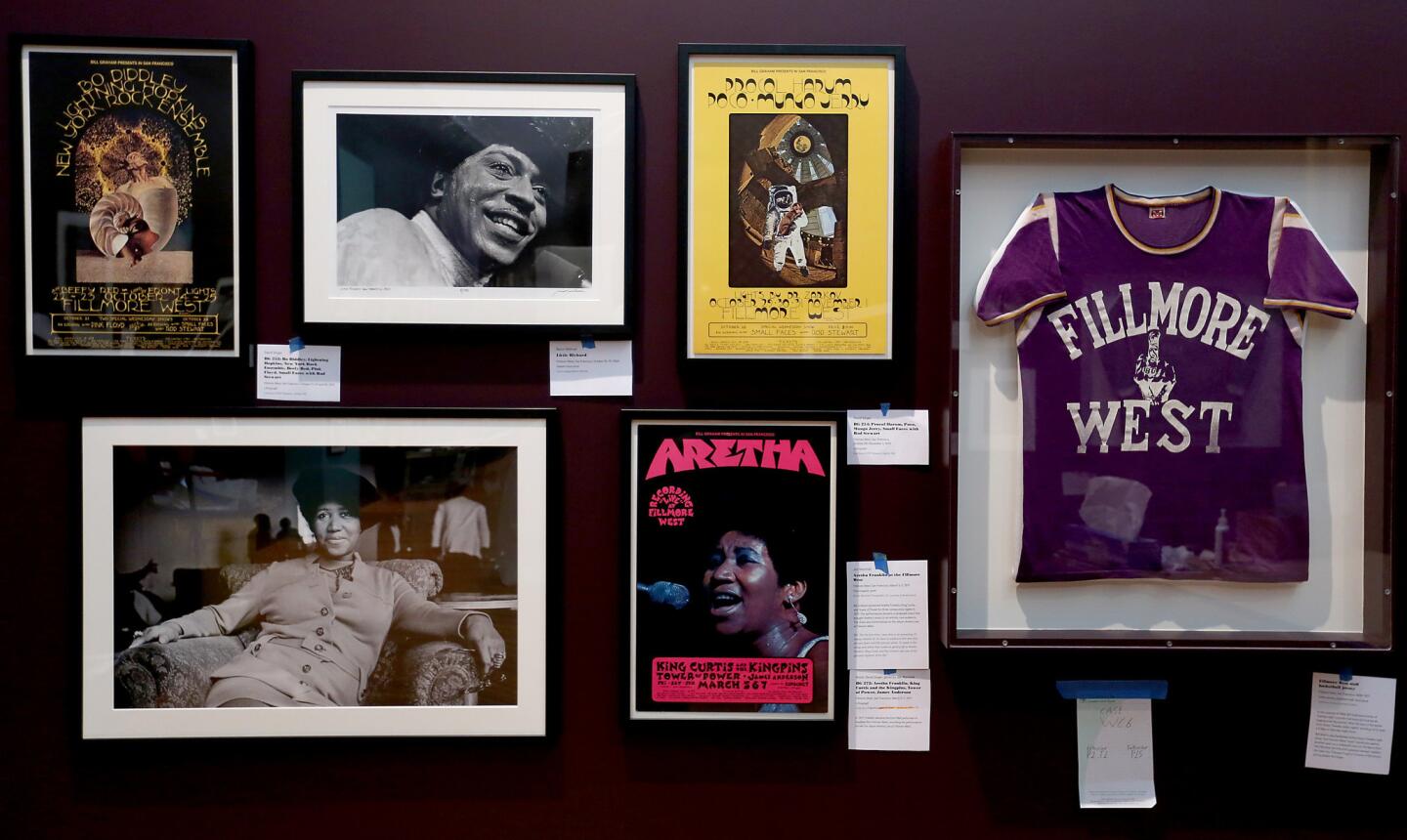
A retrospective at the Skirball Cultural Center will delve into the life and times of Bill Graham, the man who helped to hatch the
Pictures from the “Bill Graham and the Rock & Roll Revolution” exhibition at the Skirball Cultural Center.
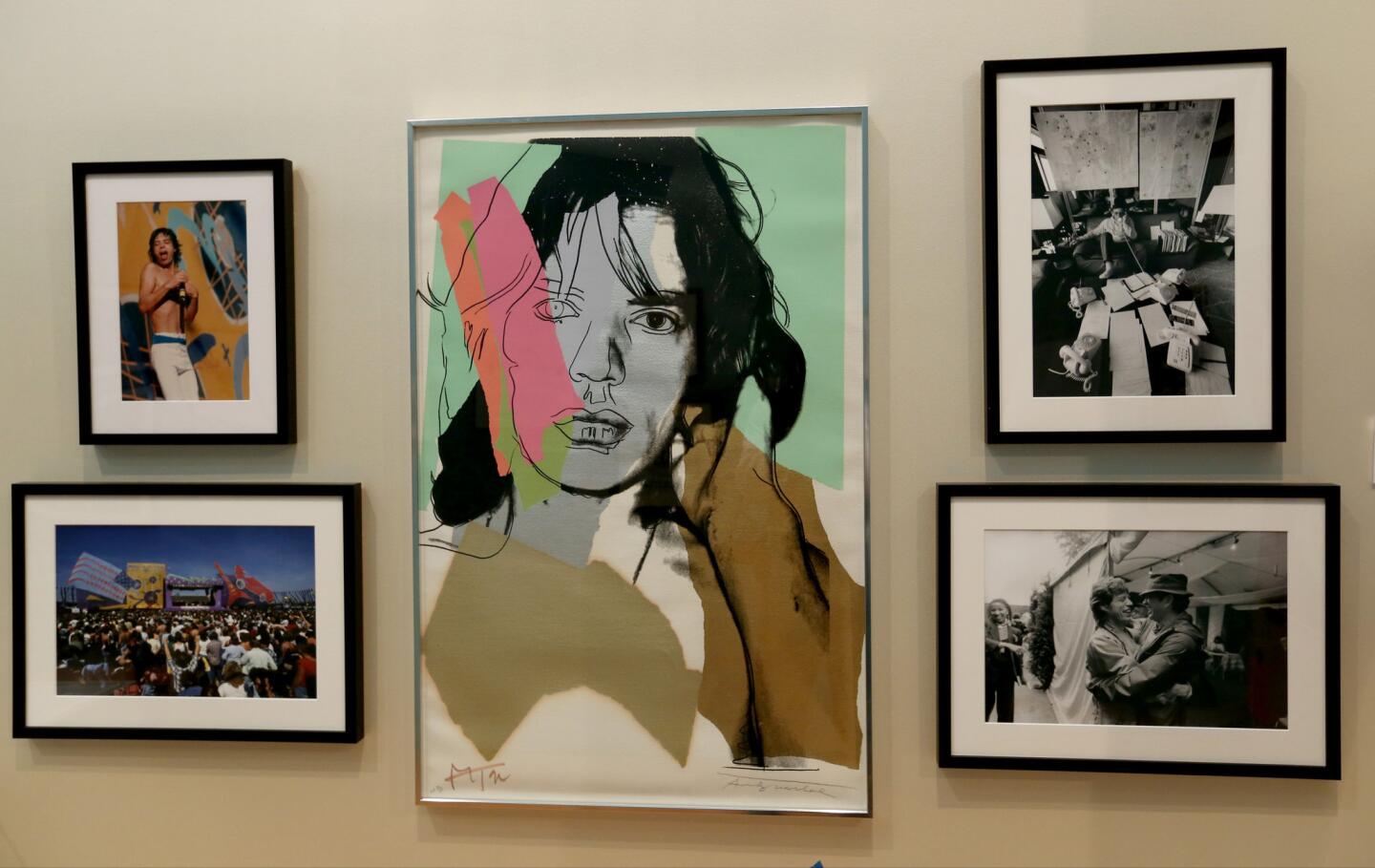
More than 400 objects related to Graham’s rise from child survivor of the Holocaust to arguably the most famous music promoter of all time are on display at the Skirball retrospective.
(Kirk McKoy / Los Angeles Times)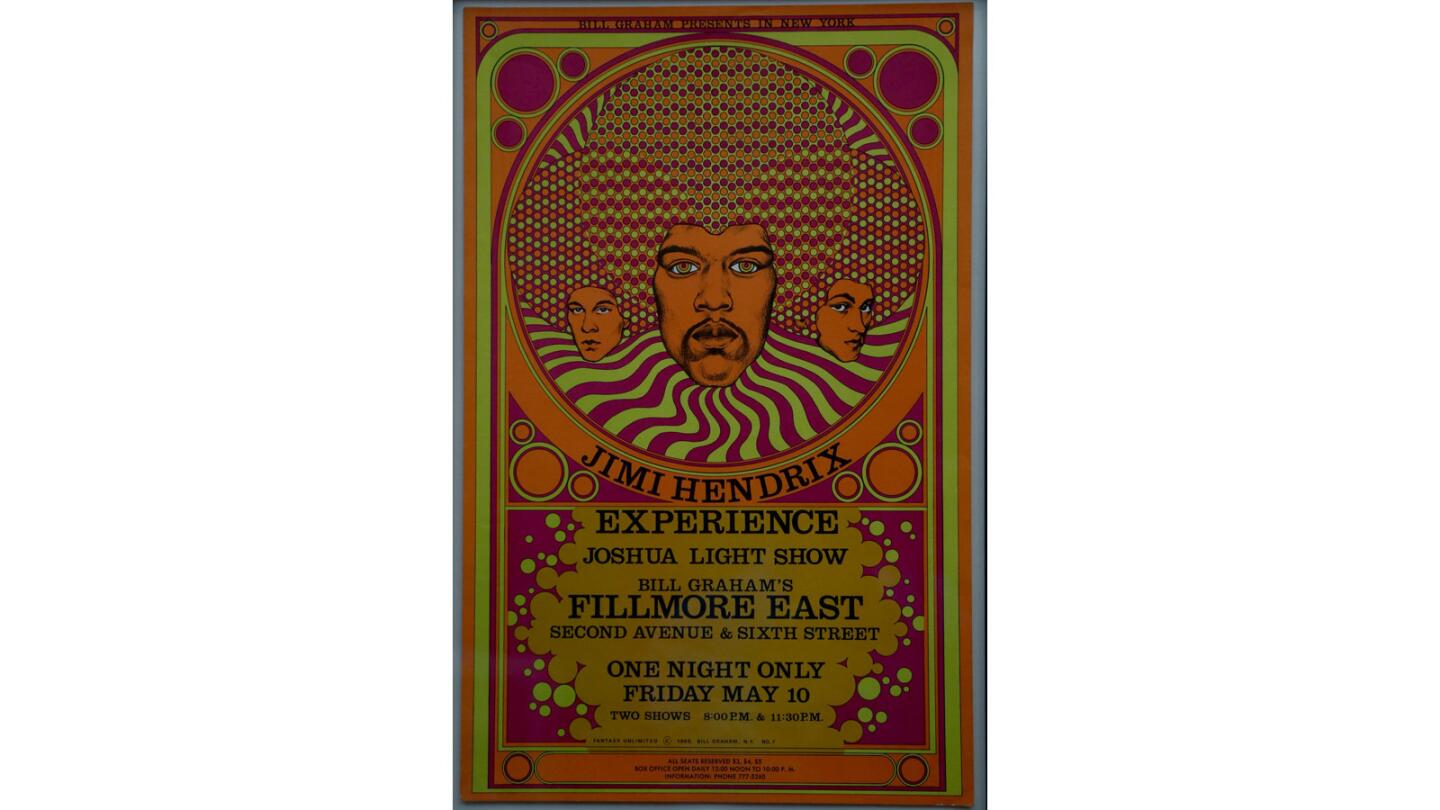
From the 1960s through the ‘80s, the words “Bill Graham Presents” on psychedelic posters became synonymous with rock ‘n’ roll history in the making.
(Kirk McKoy / Los Angeles Times)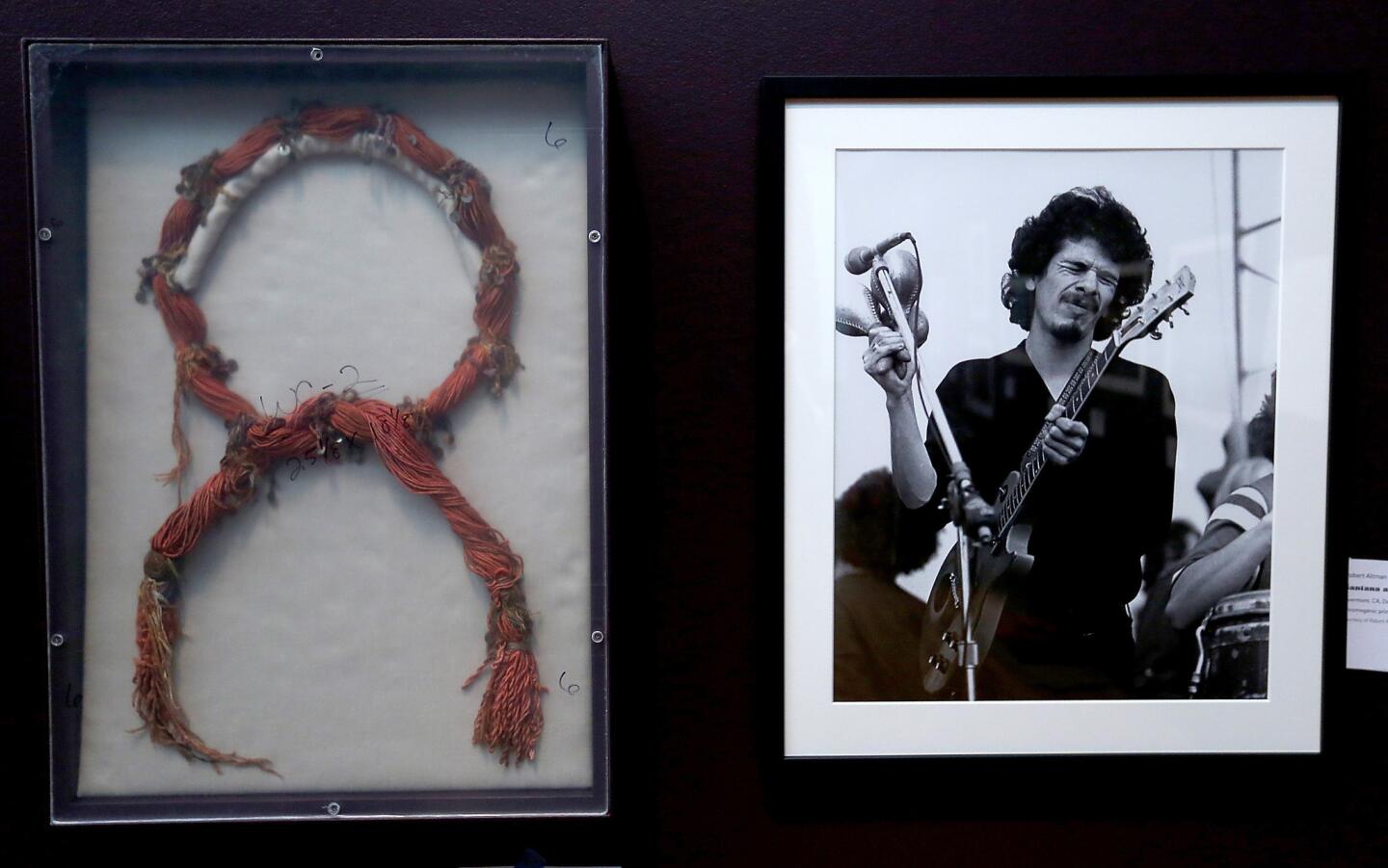
A belt worn by
Advertisement
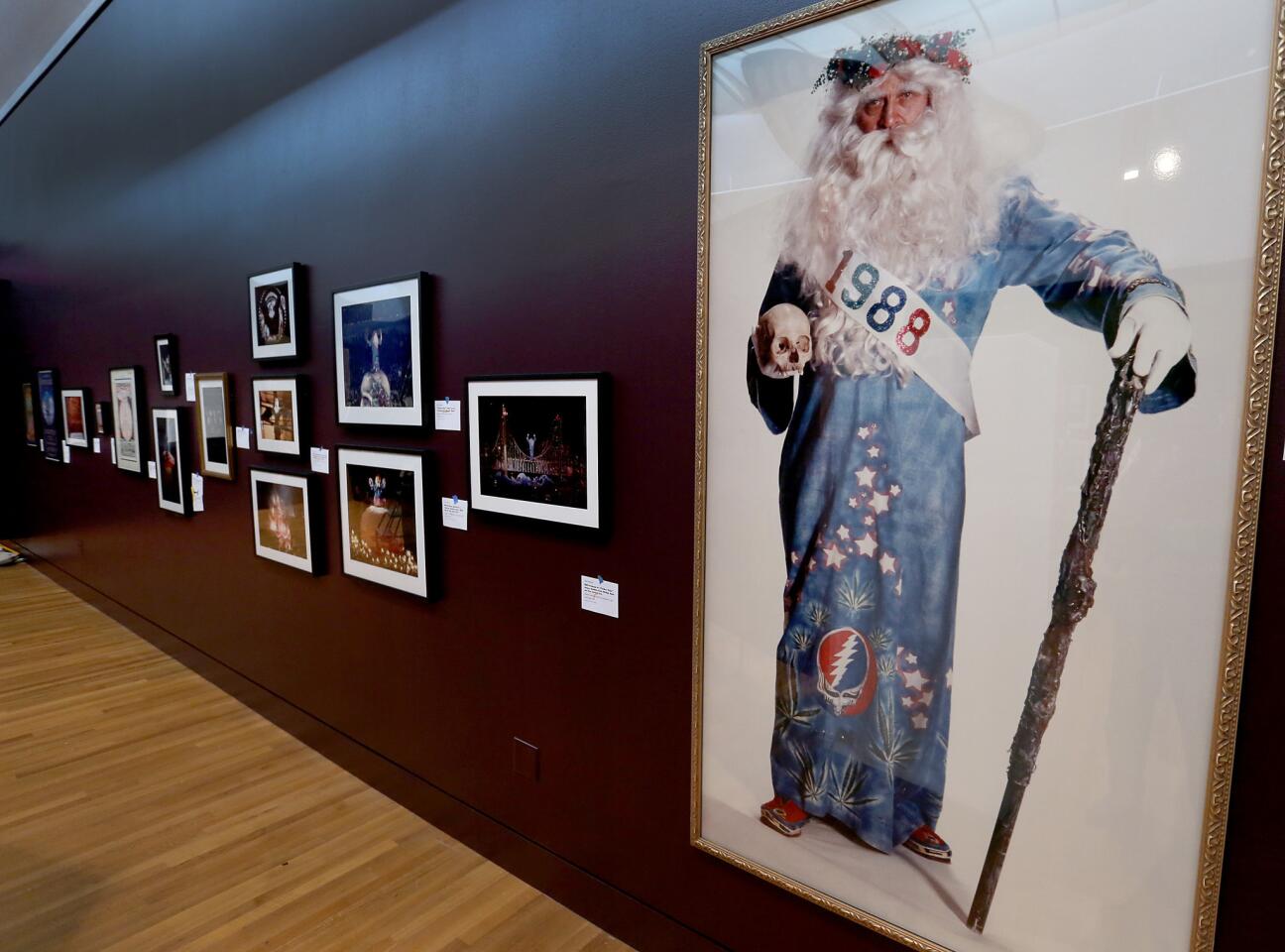
Bill Graham dressed as Father Time for a New Year’s Eve concert in 1988.
(Kirk McKoy / Los Angeles Times)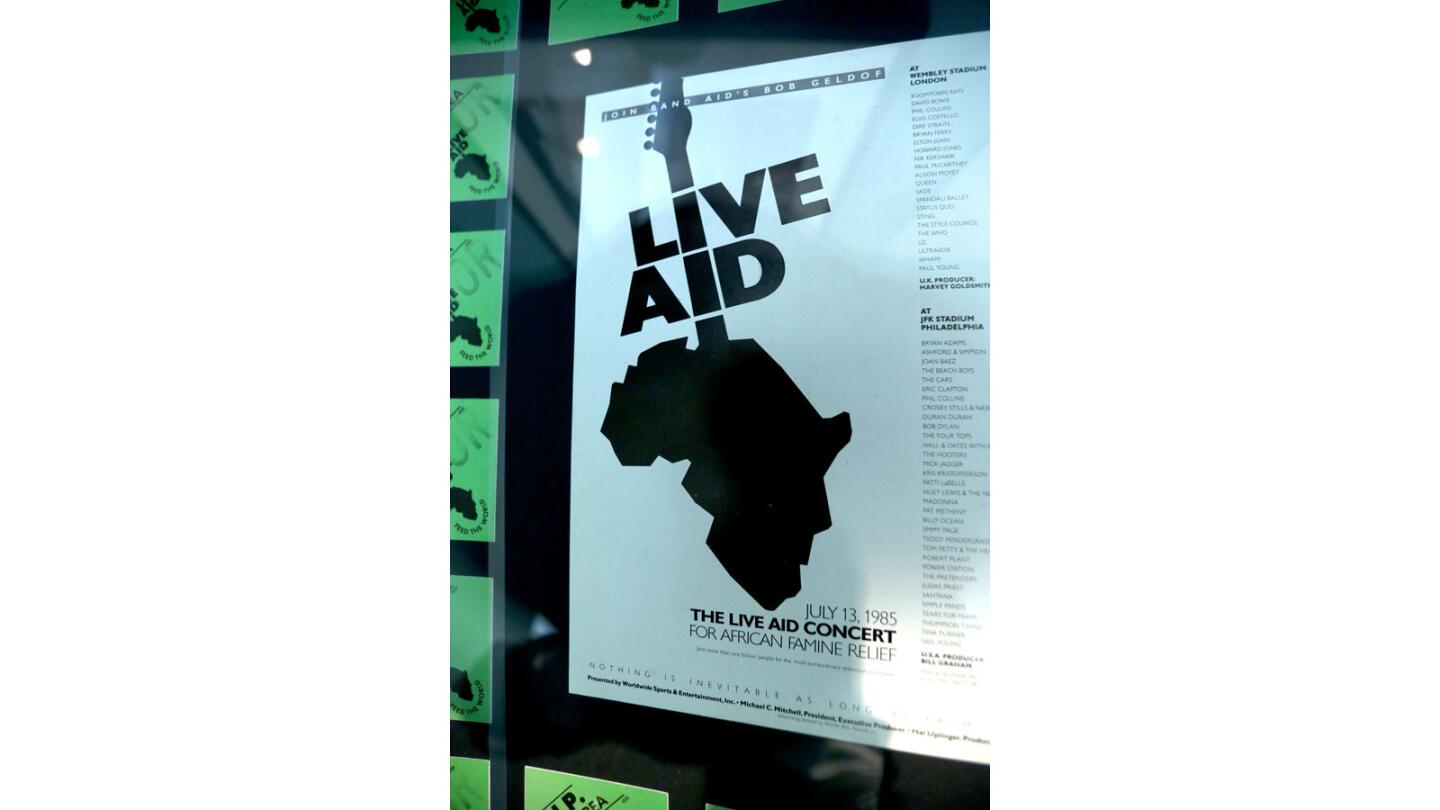
Once Graham had established himself as a promoter, he spent much of his time promoting large benefit concerts, including the U.S. portion of Live Aid to fund famine relief efforts in Ethiopia in 1985.
(Kirk McKoy / Los Angeles Times)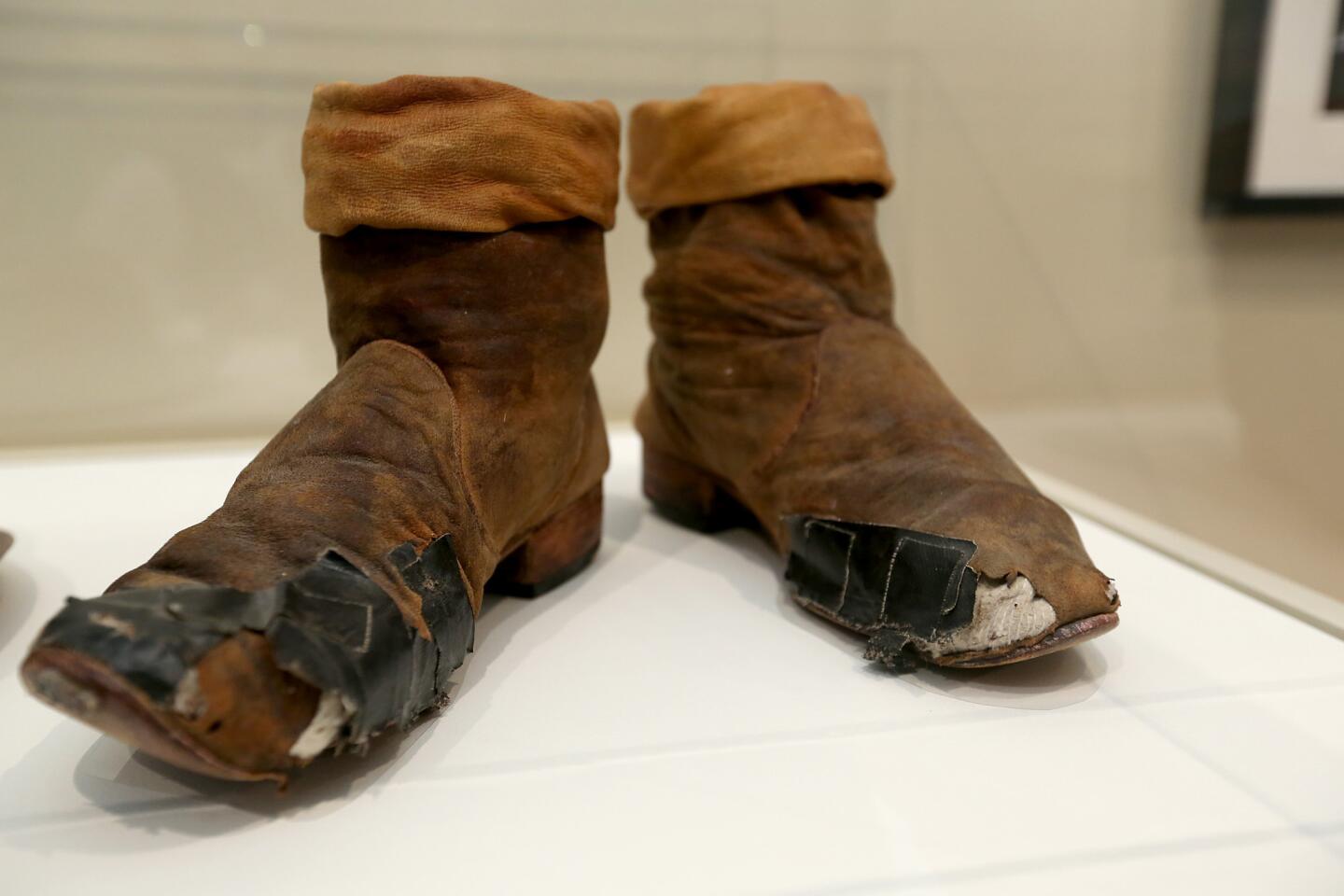
Shoes that were worn by Keith Richards, repaired by Bill Graham during a 1981 tour.
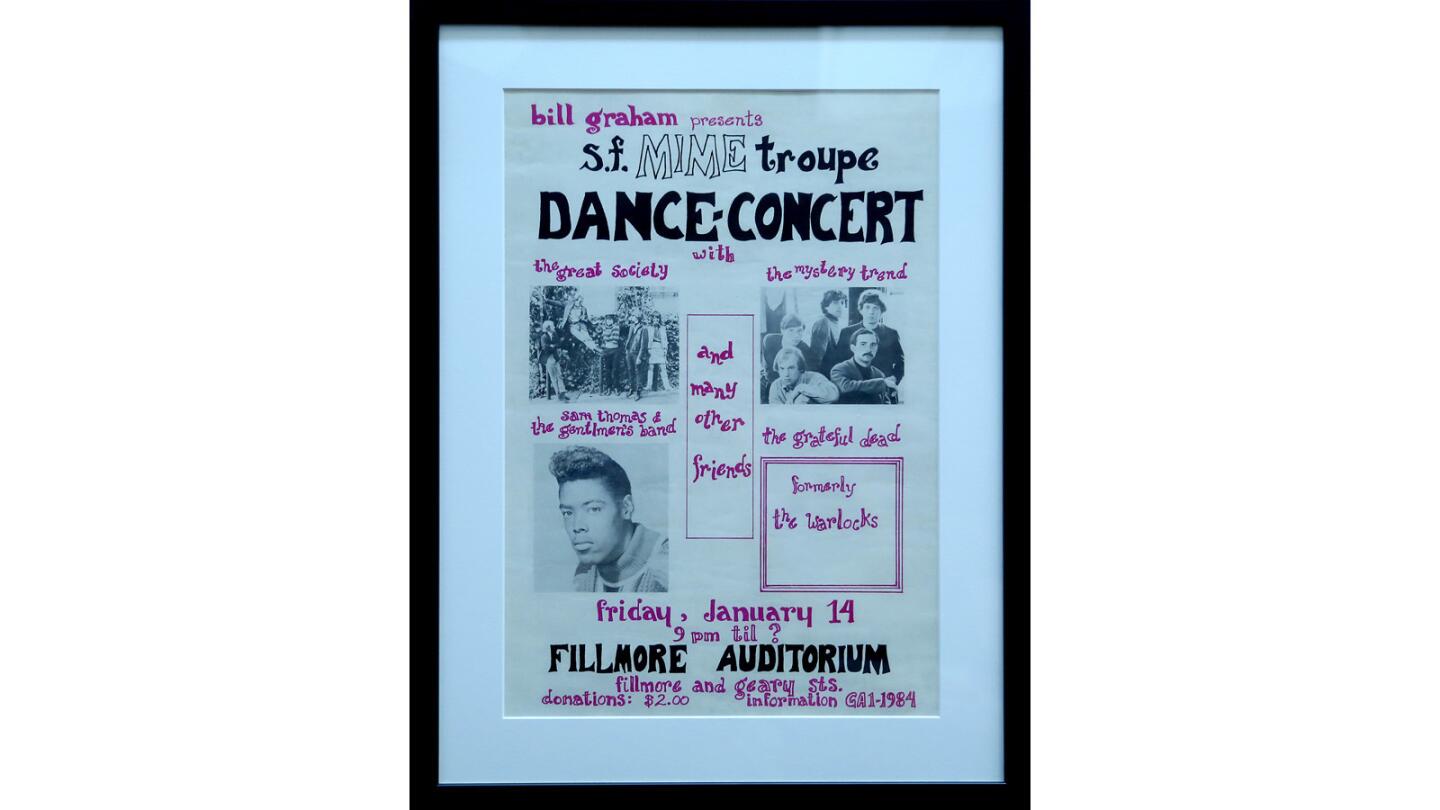
When San Francisco’s parks department prevented a radical theater group called the San Francisco Mime Troupe from performing on city land, citing obscenity, Graham produced a benefit concert to cover legal costs.
(Kirk McKoy / Los Angeles Times)Advertisement
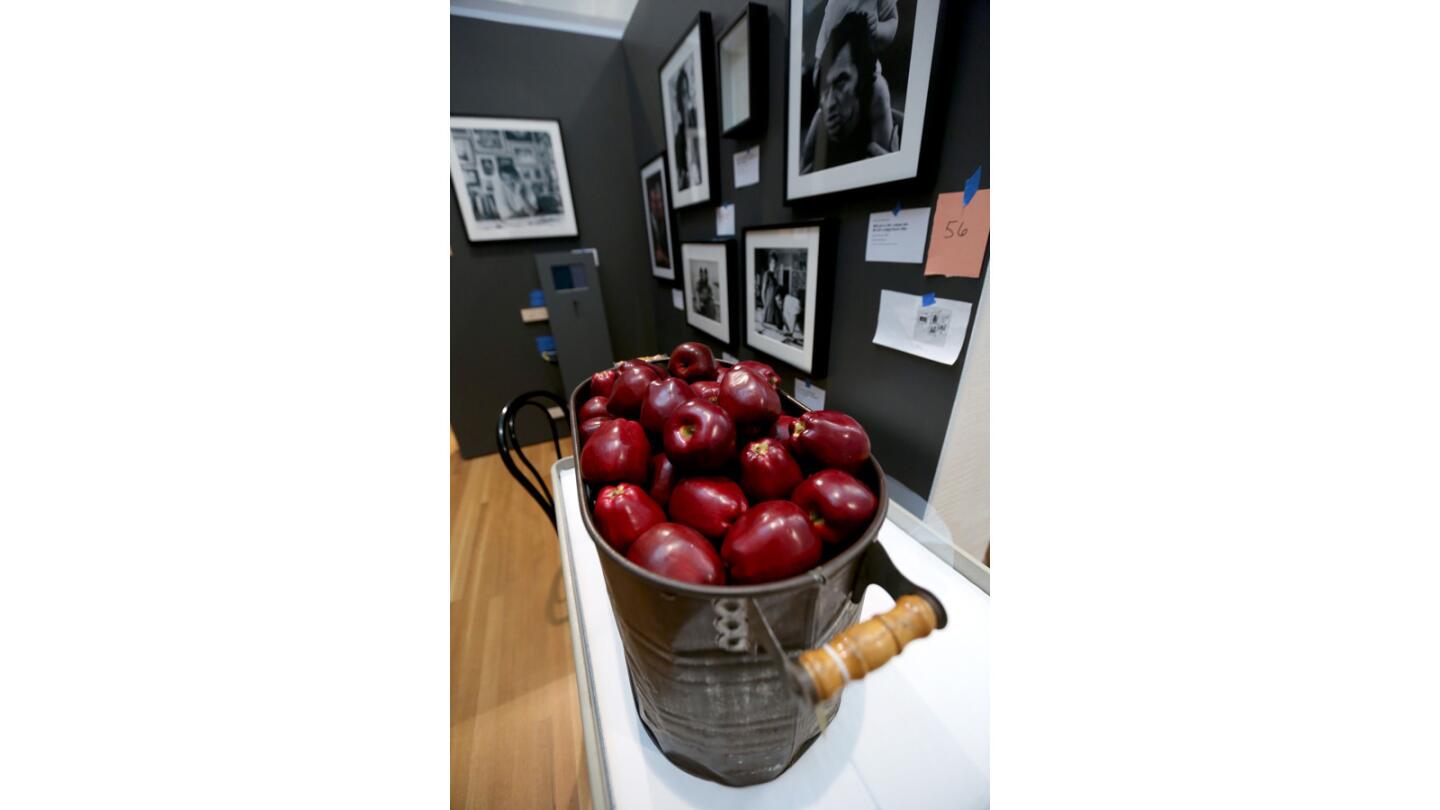
The original apple barrel that greeted guests at the Fillmore with a sign that read “Take One or Two” is the most meaningful item in the exhibition.
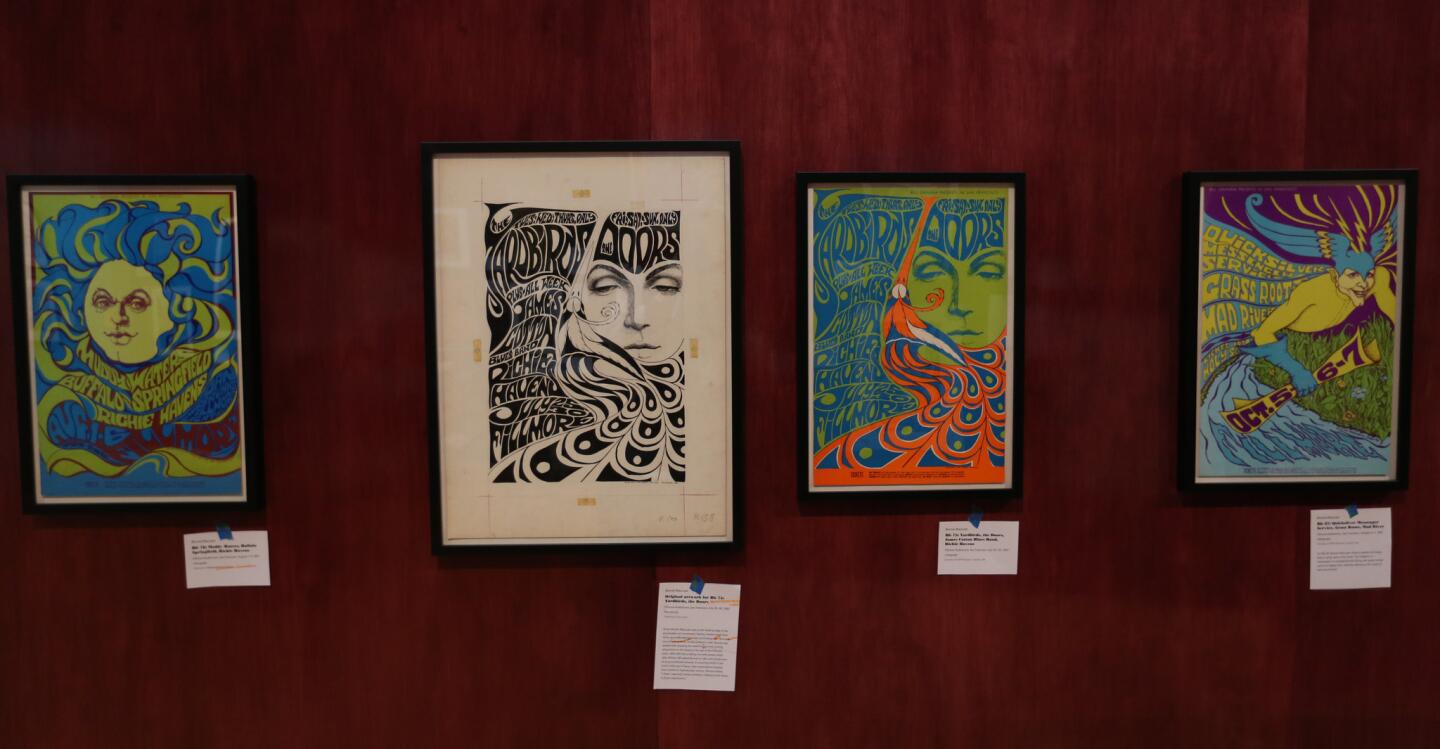
Bill Graham’s success can be credited to his dogged work ethic, legendary temper and unparalleled ability to micromanage every detail of an event.
(Kirk McKoy / Los Angeles Times)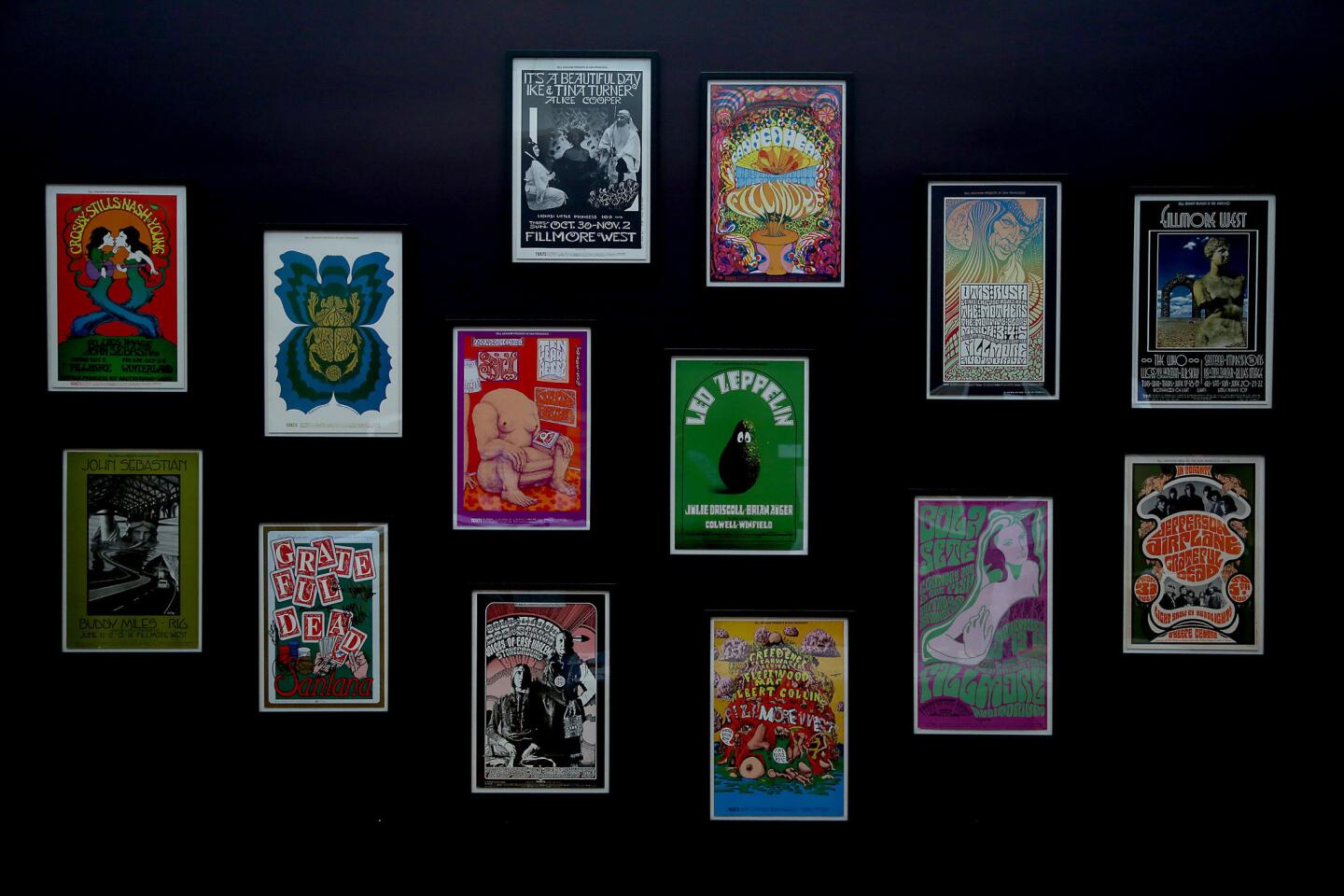
Graham benefited from being at the nexus of a counterculture movement driven by rock music and fed by the raw talent of artists who rose together.
(Kirk McKoy / Los Angeles Times)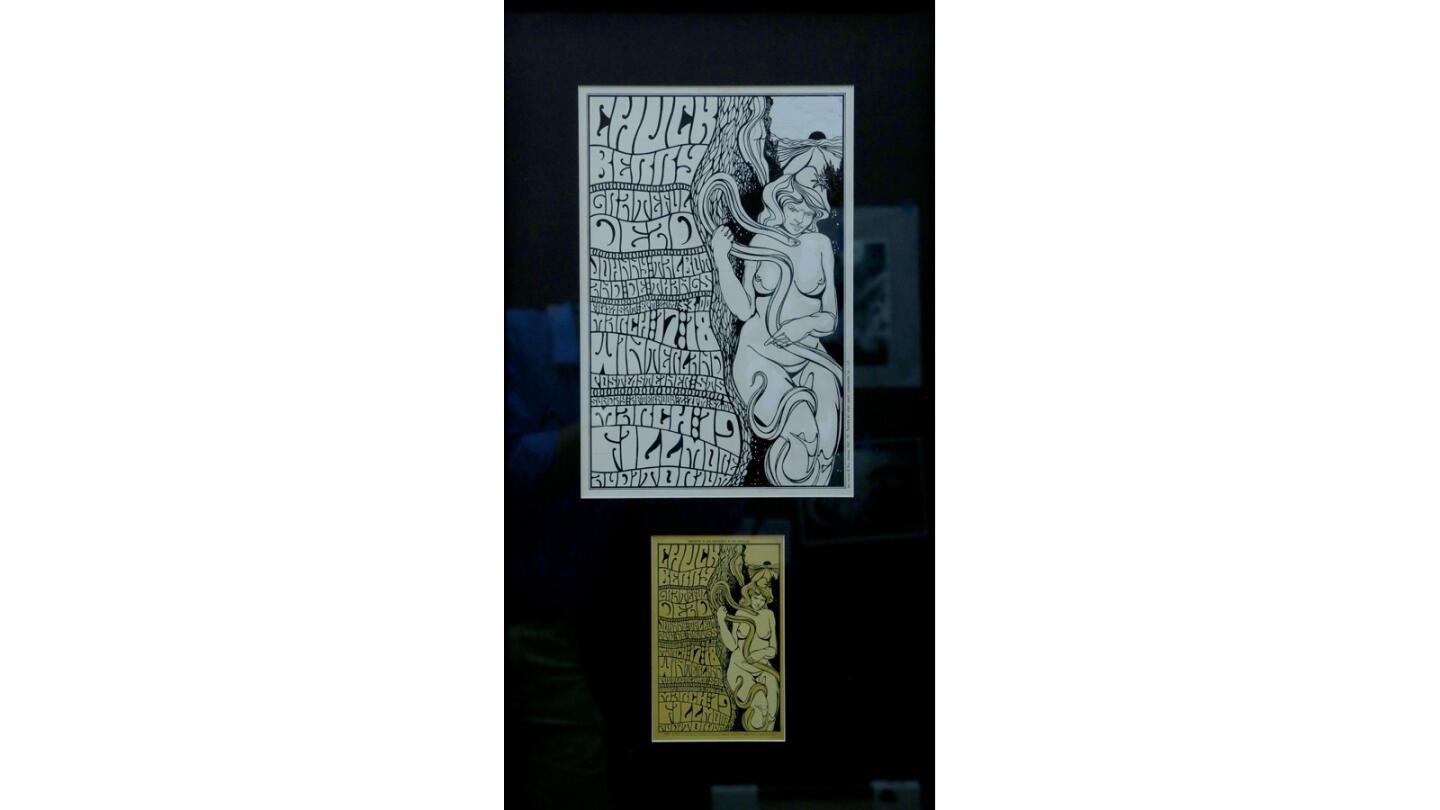
The Skirball also has dozens of original concert posters.
(Kirk McKoy / Los Angeles Times)Advertisement
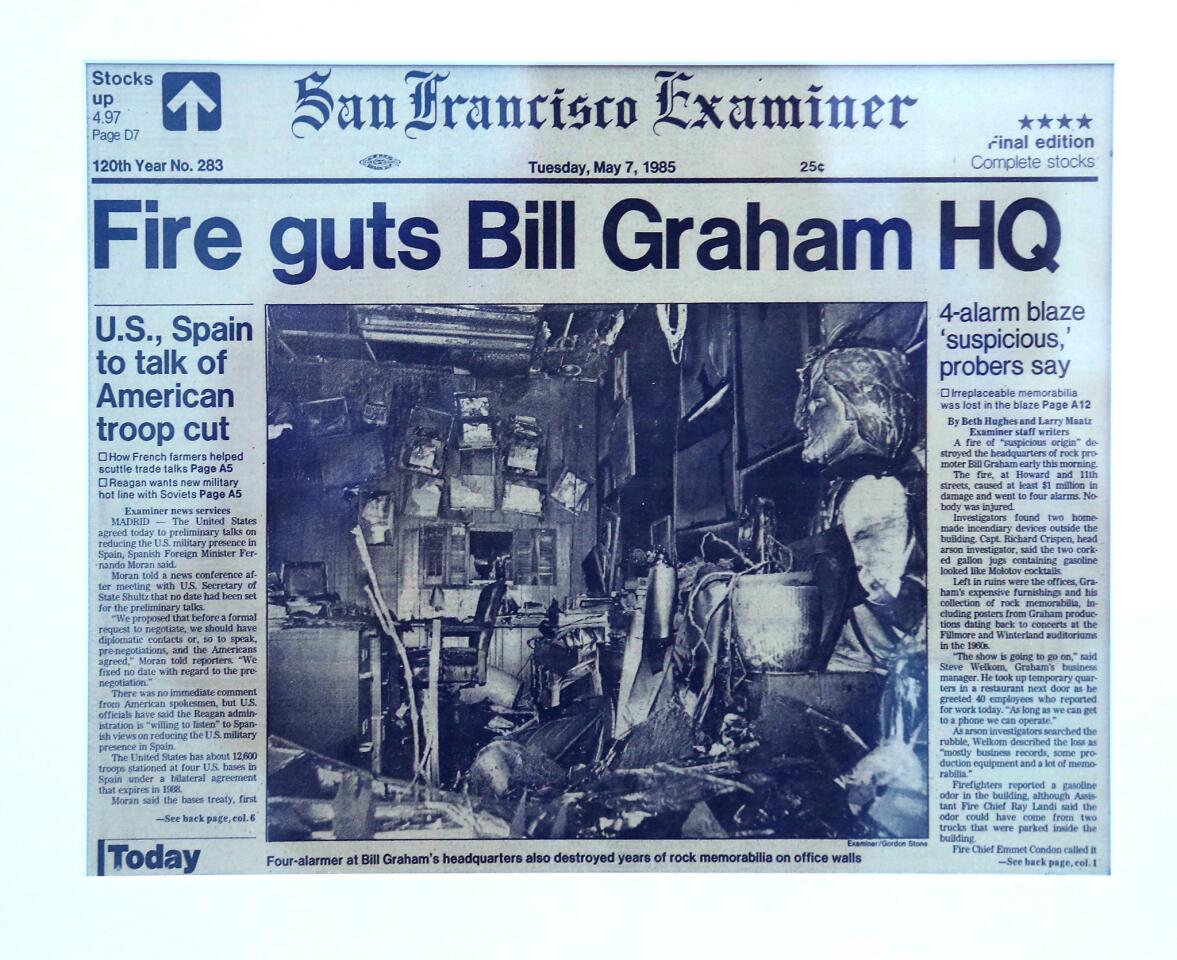
Bill Graham’s San Francisco offices were firebombed in 1985 after he had organized protests against a planned visit by President Reagan to the Bitburg cemetery in Germany, where dozens of SS officers were interred.
(Kirk McKoy / Los Angeles Times)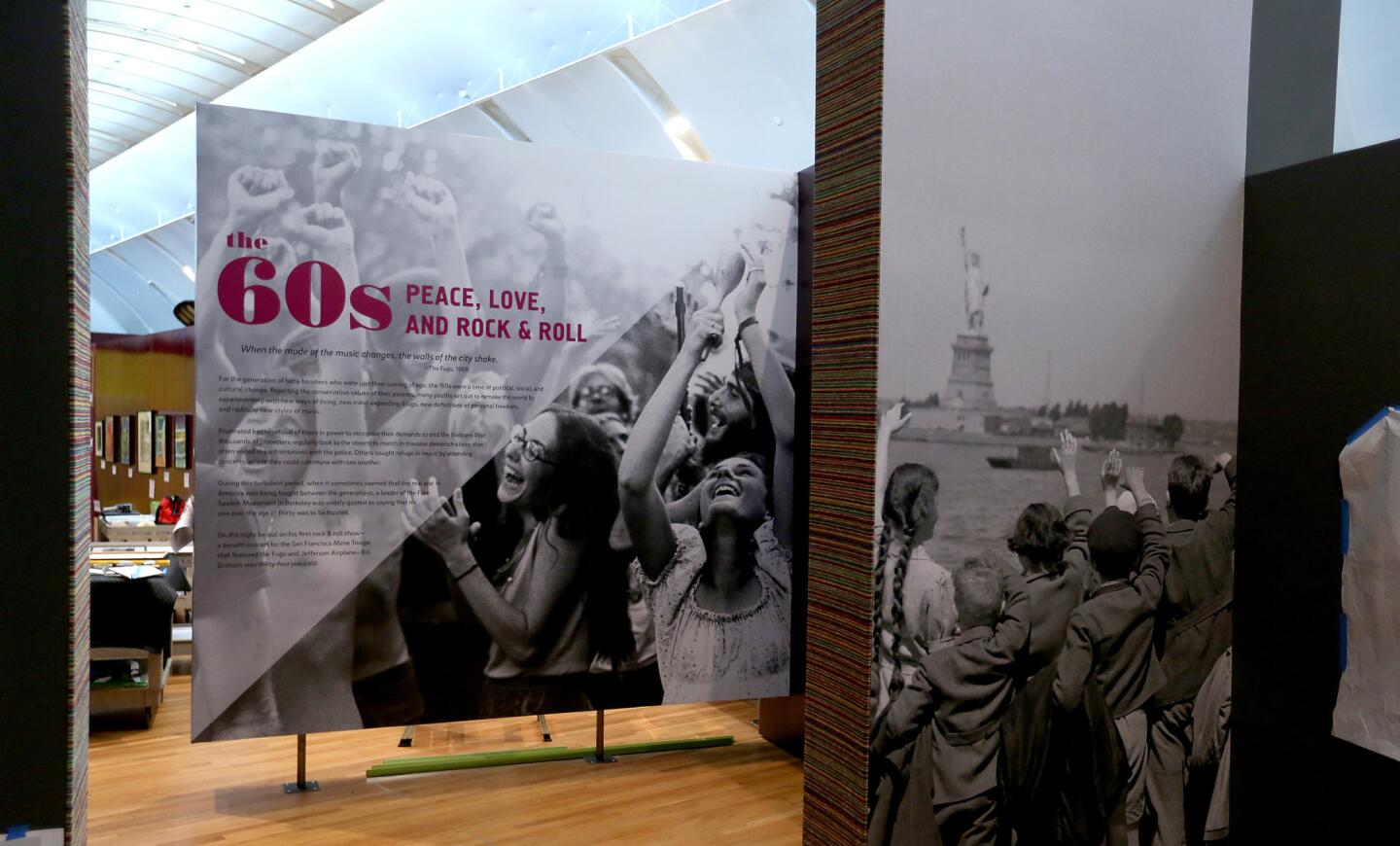
Bill Graham began promoting rock concerts in the 1960s.
(Kirk McKoy / Los Angeles Times)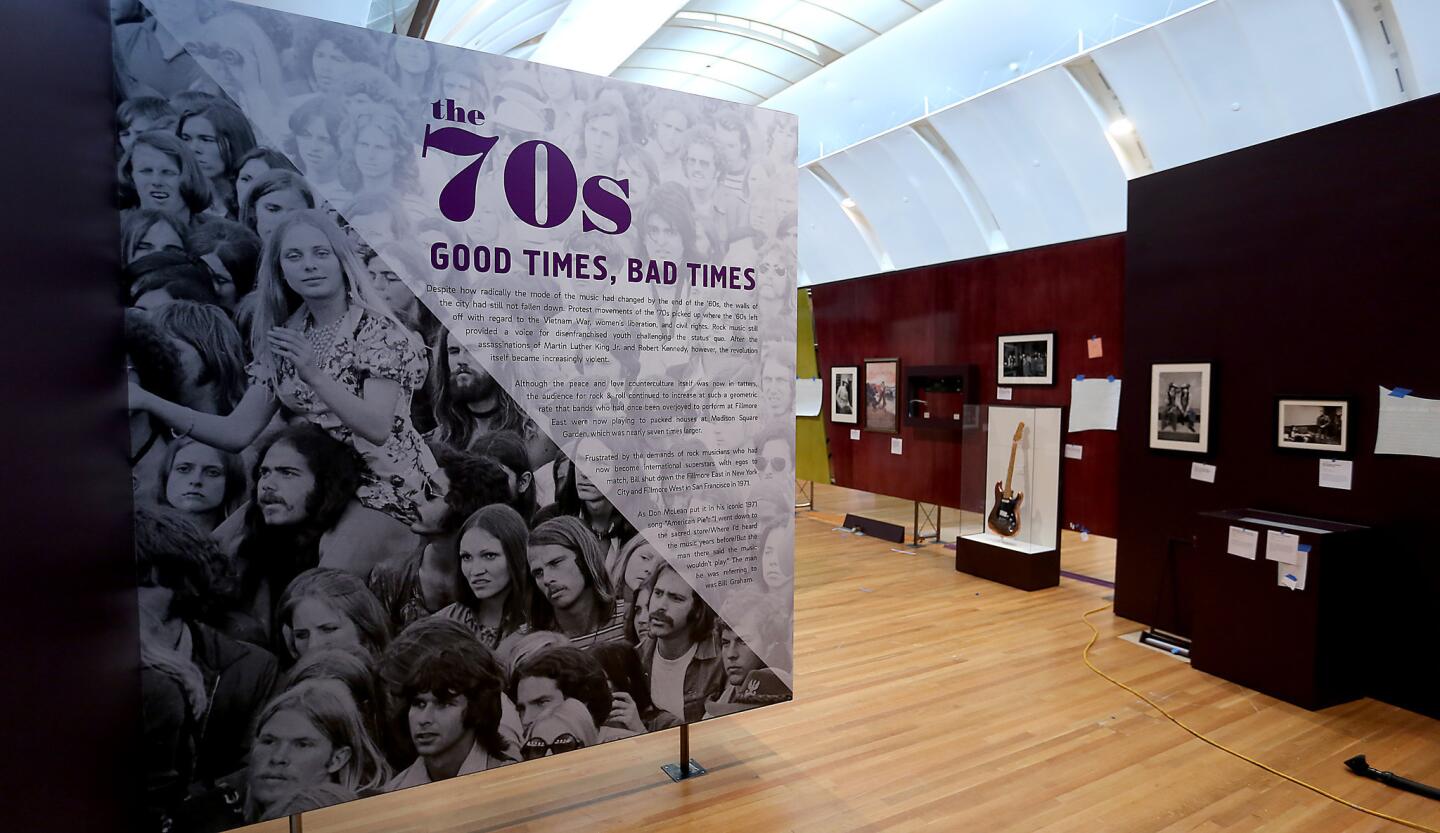
The exhibition is organized according to chapters in Graham’s life.
(Kirk McKoy / Los Angeles Times)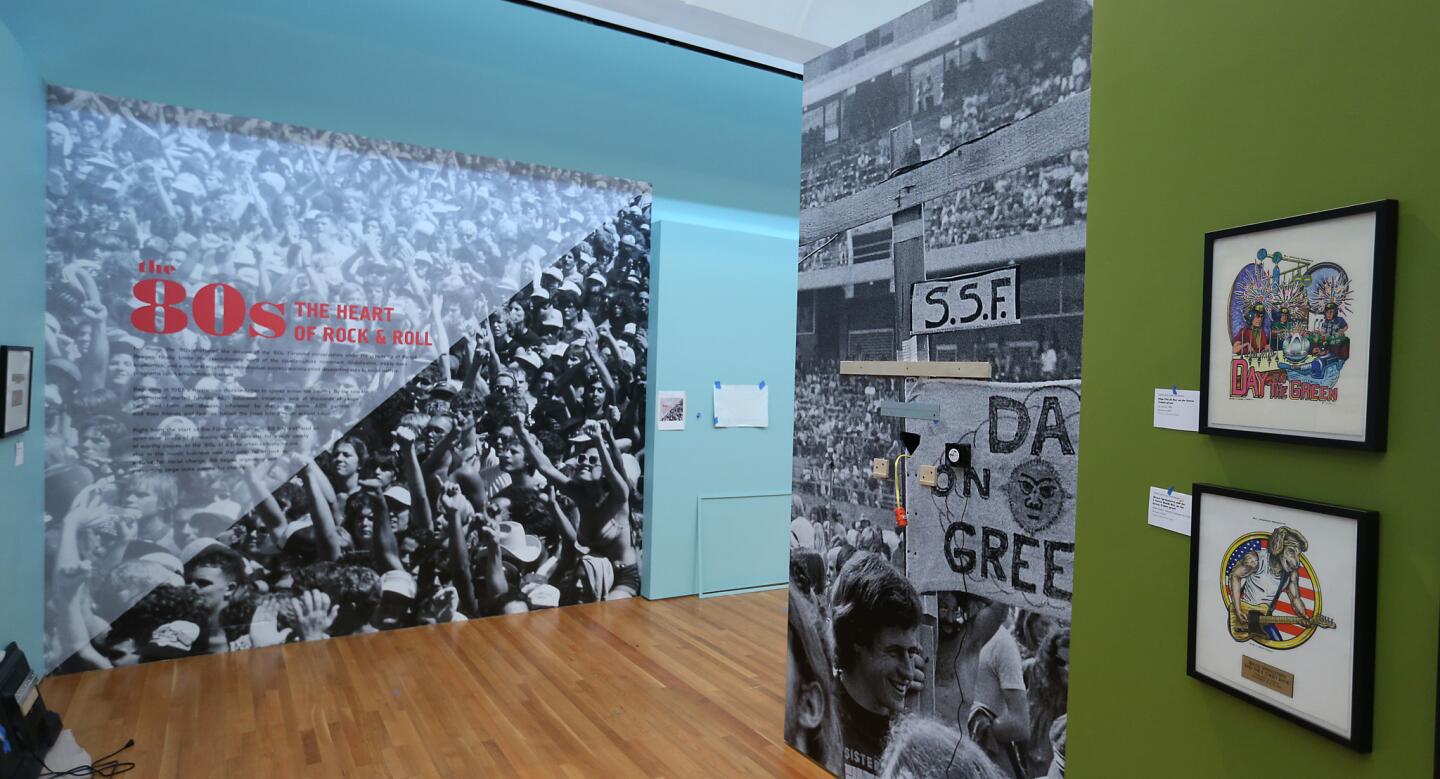
Bill Graham died in a helicopter crash in 1991.
(Kirk McKoy / Los Angeles Times)Advertisement
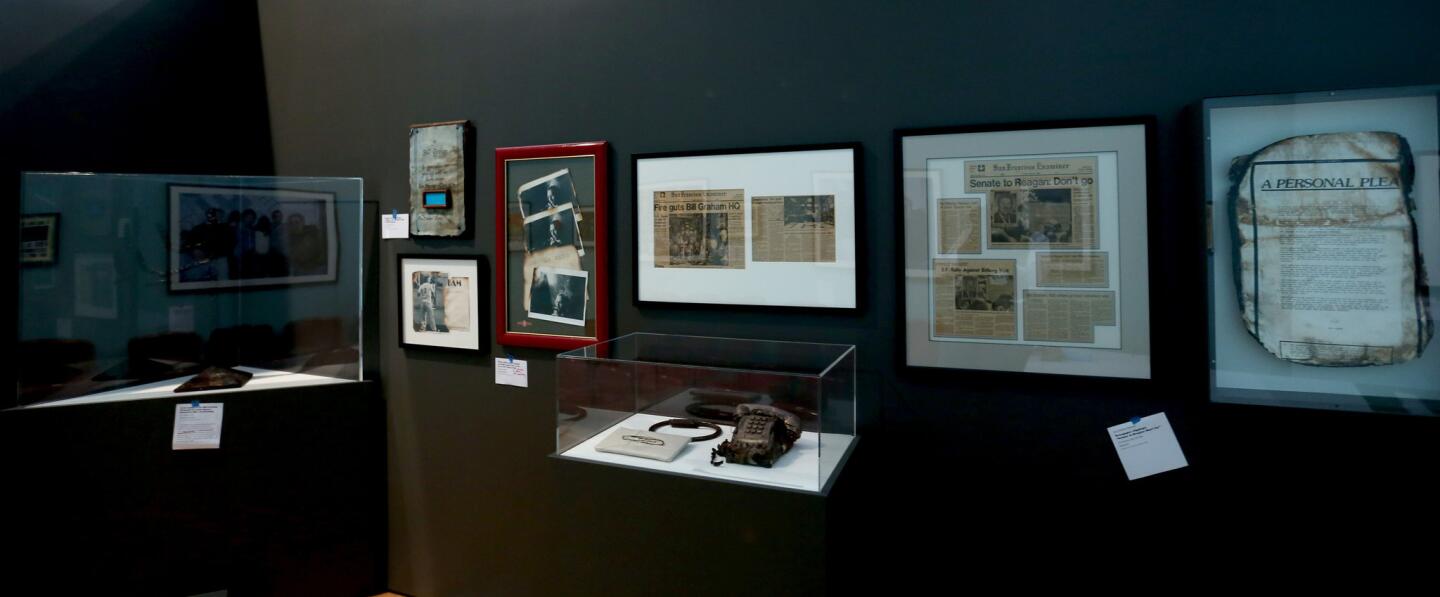
A melted telephone and eyeglasses and a burned menorah from the 1985 firebombing are on display in the exhibition.
(Kirk McKoy / Los Angeles Times)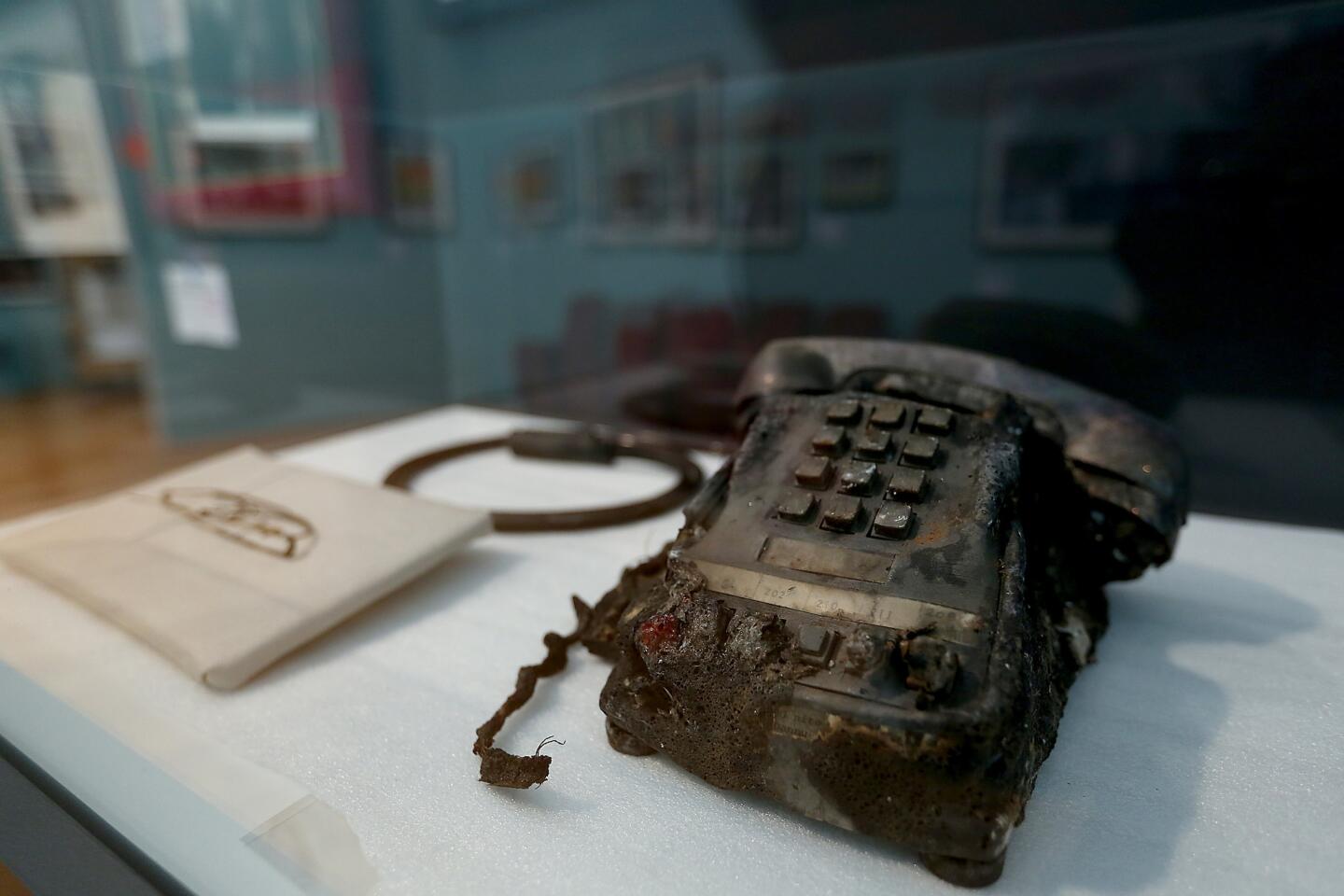
The eyeglasses and a burned menorah from the firebombing of Graham’s office.
(Kirk McKoy / Los Angeles Times)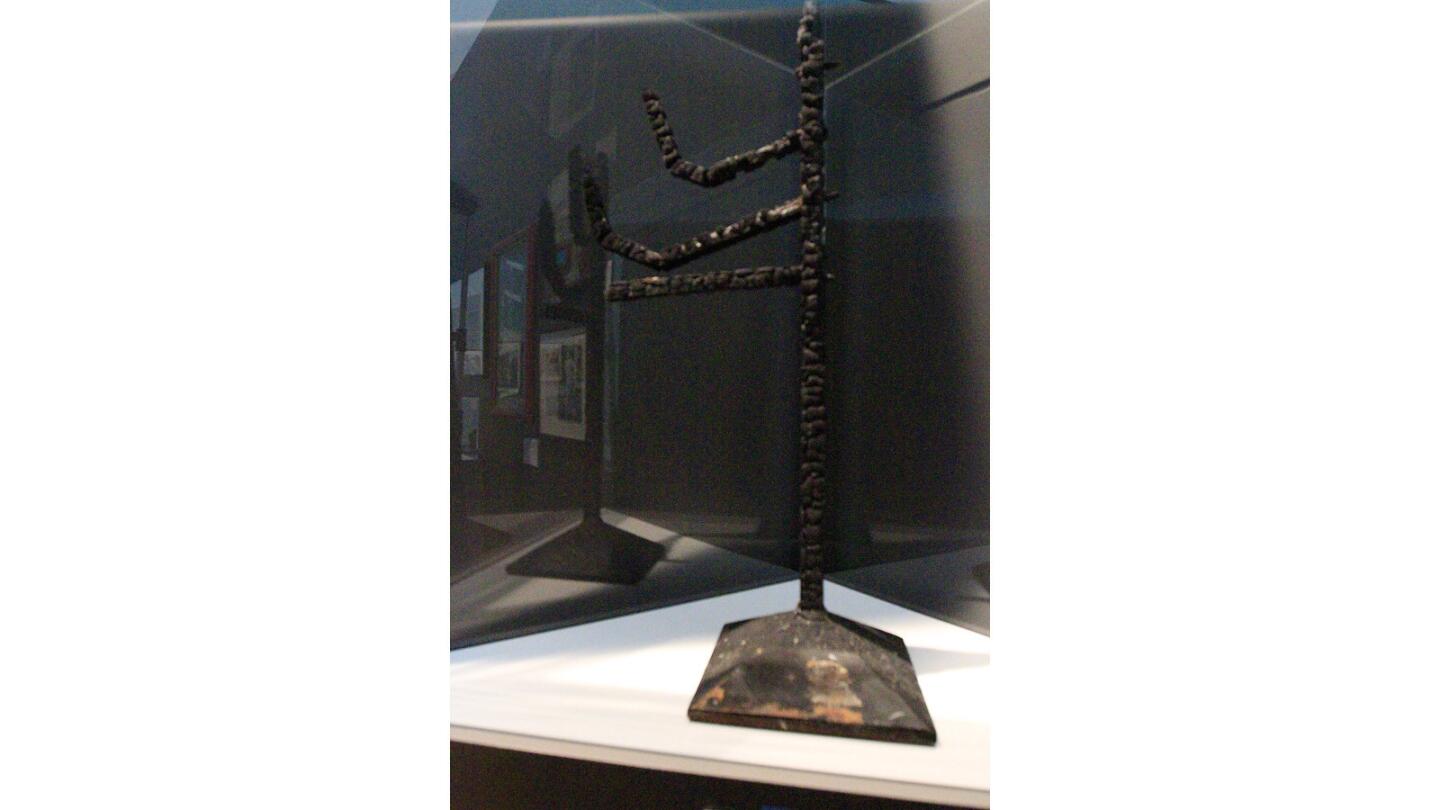
A menorah that was burned in Bill Graham’s office bombing.
(Kirk McKoy / Los Angeles Times)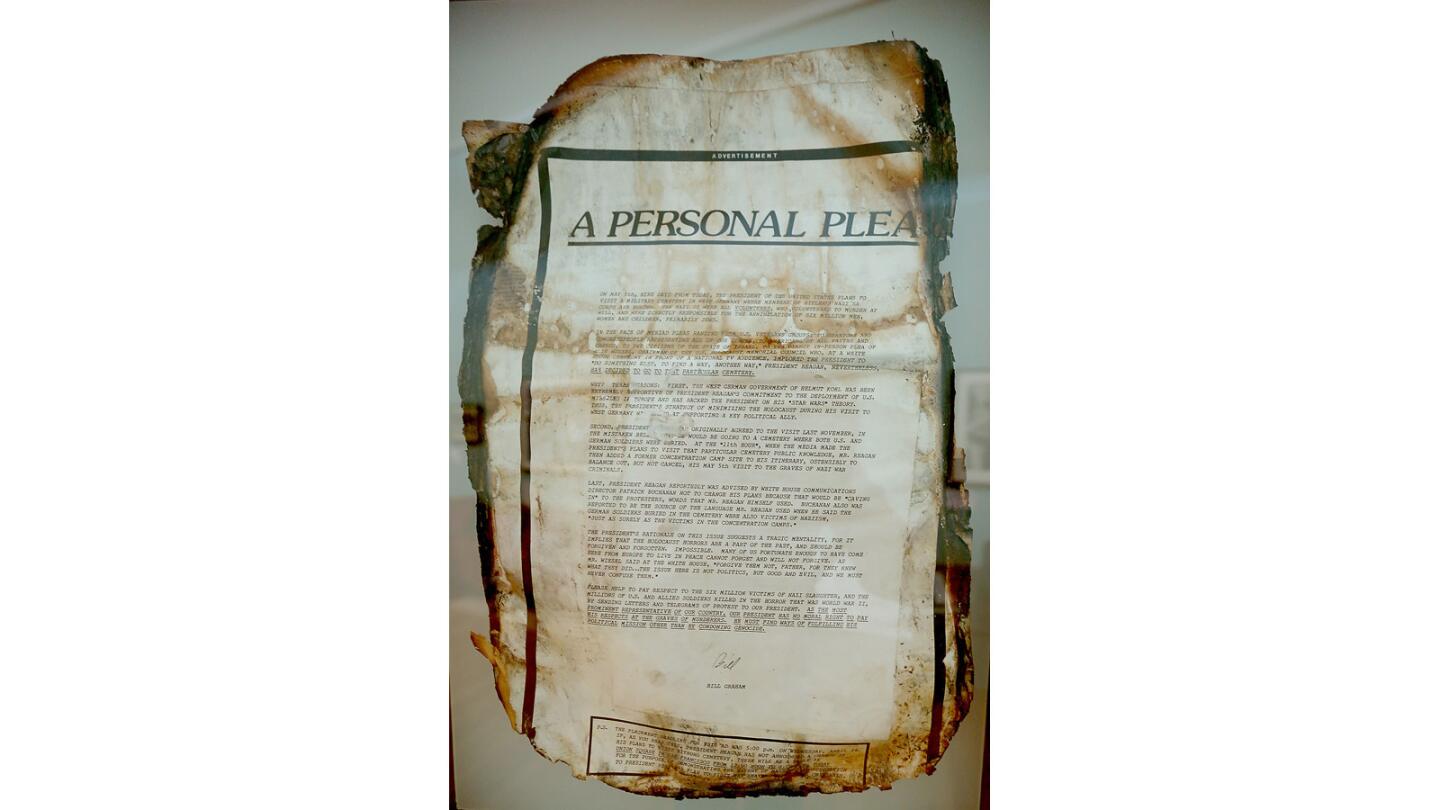
Charred documents are also on display at the Graham retrospective.
(Kirk McKoy / Los Angeles Times)Advertisement
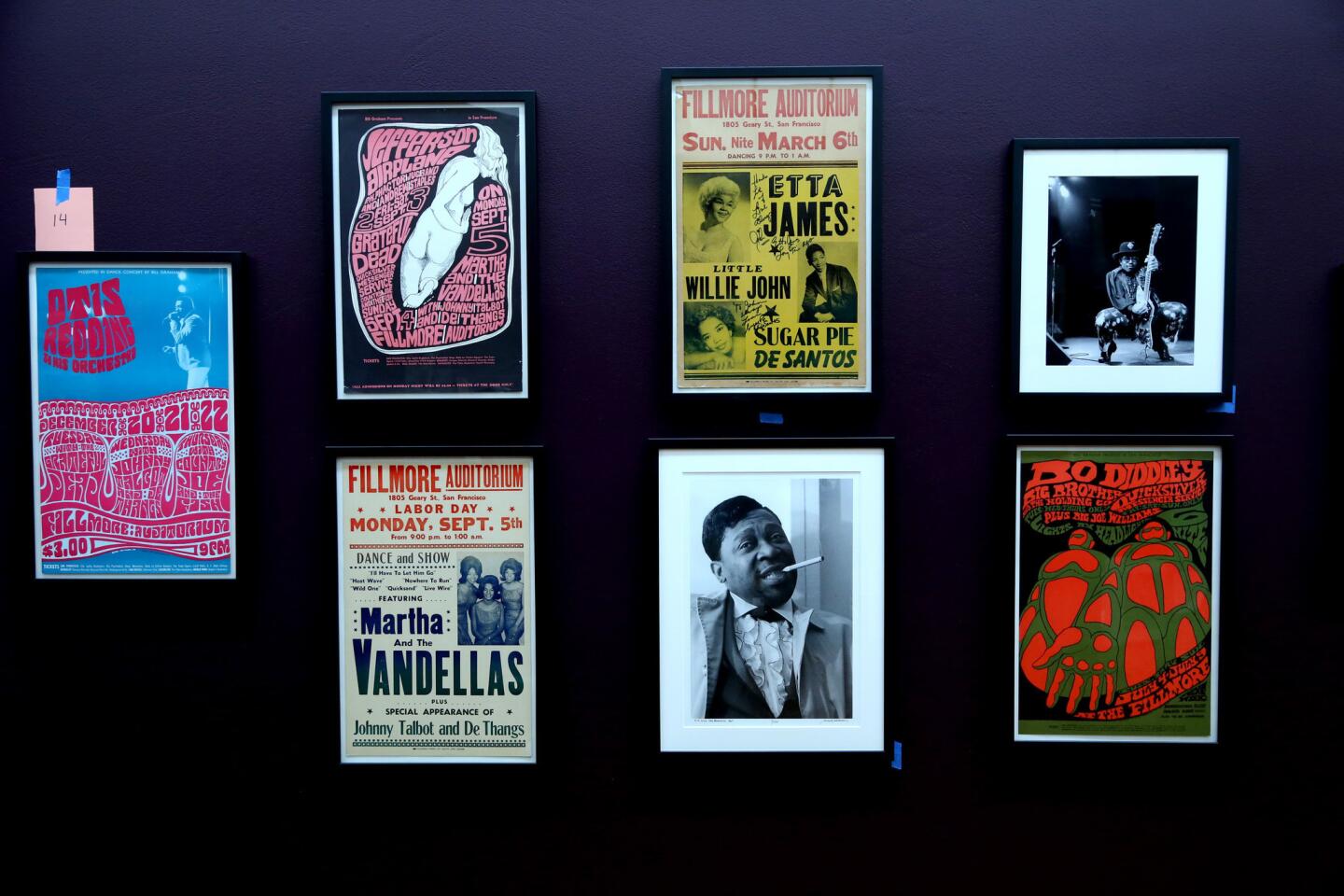
“He was also a visionary. He basically invented the whole idea of ‘rock theater,’ where you went to a concert for an immersion experience,” Skirball museum director Rabbi Robert Kirschner said of Graham.
(Kirk McKoy / Los Angeles Times)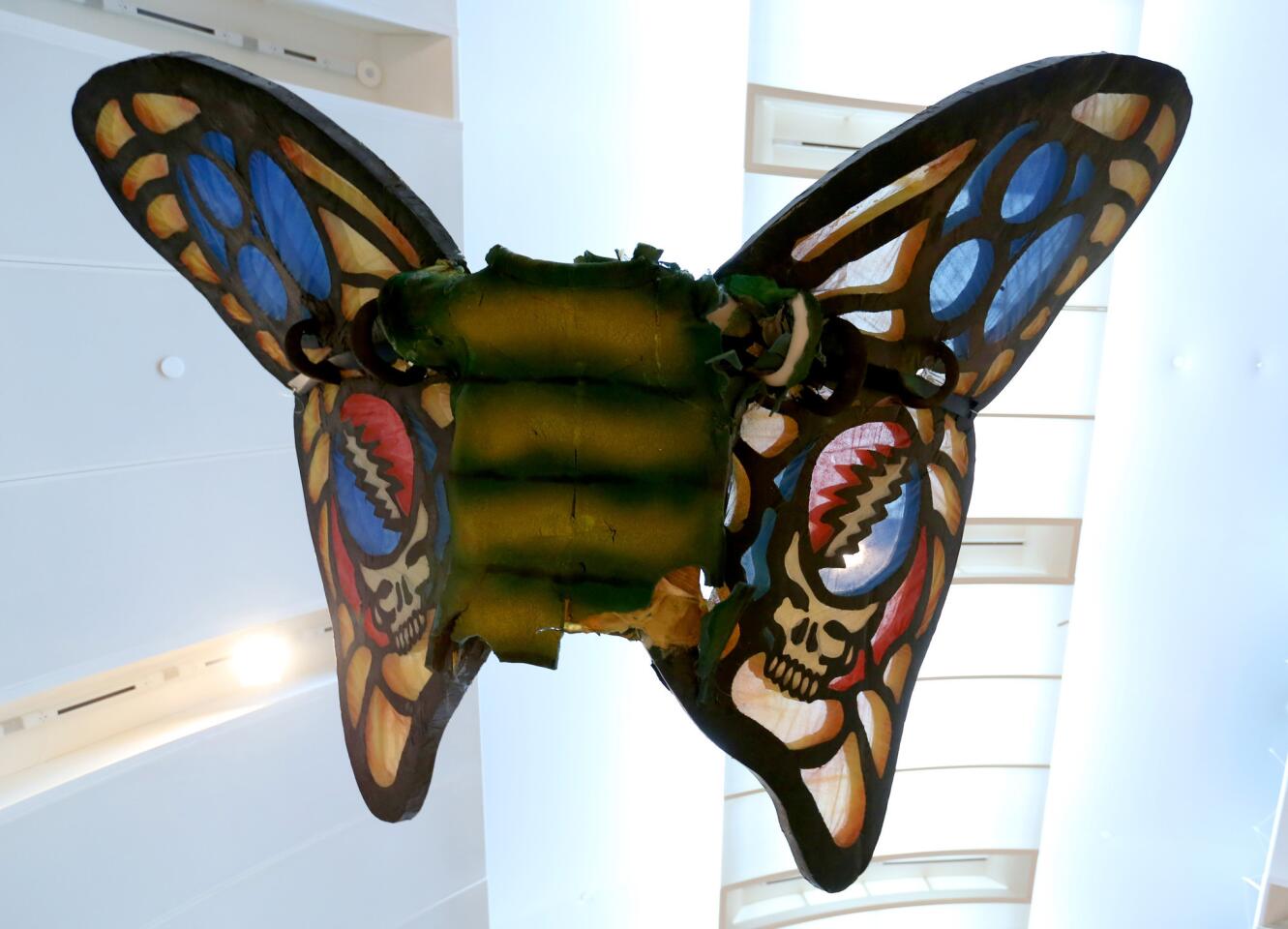
Bill Graham’s butterfly costume.
(Kirk McKoy / Los Angeles Times)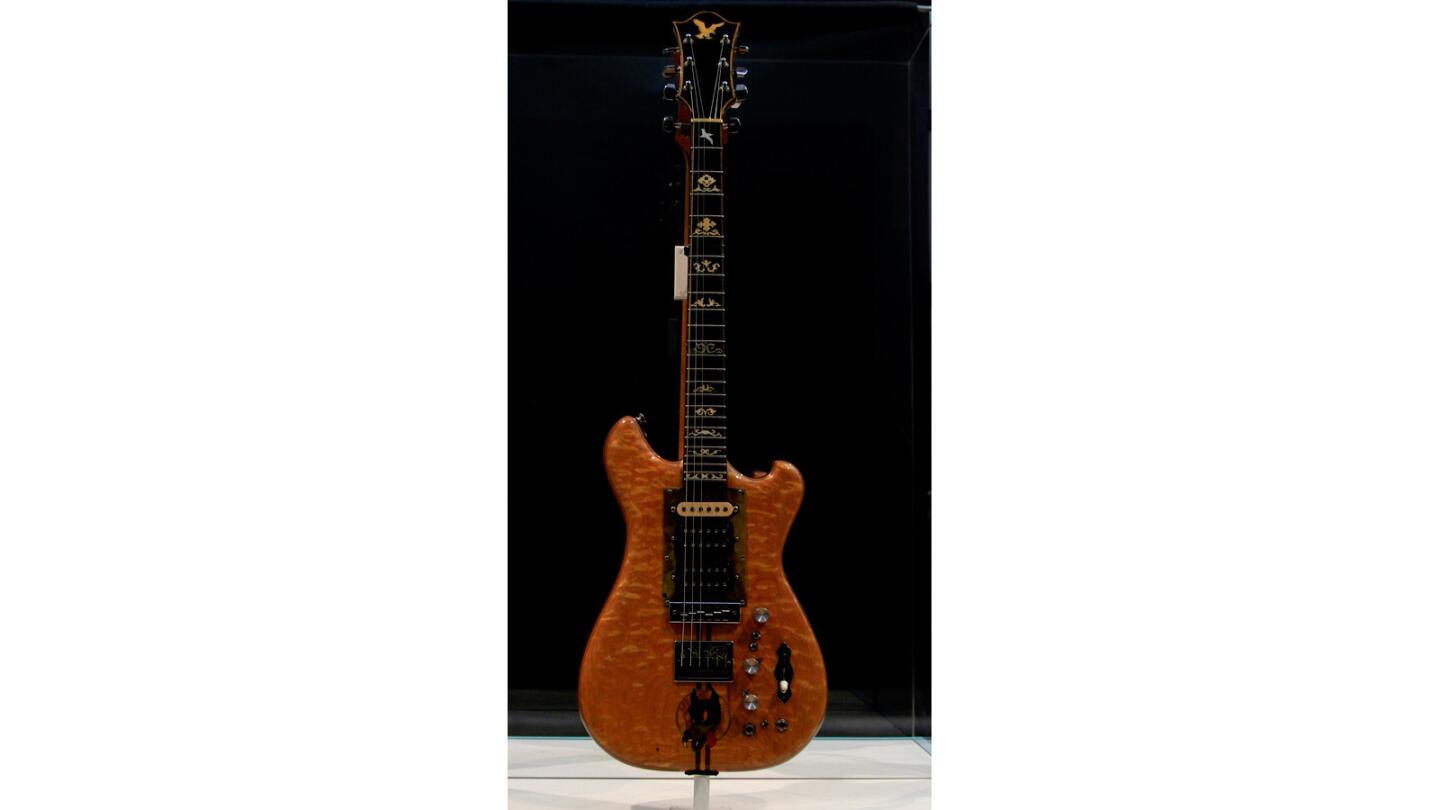
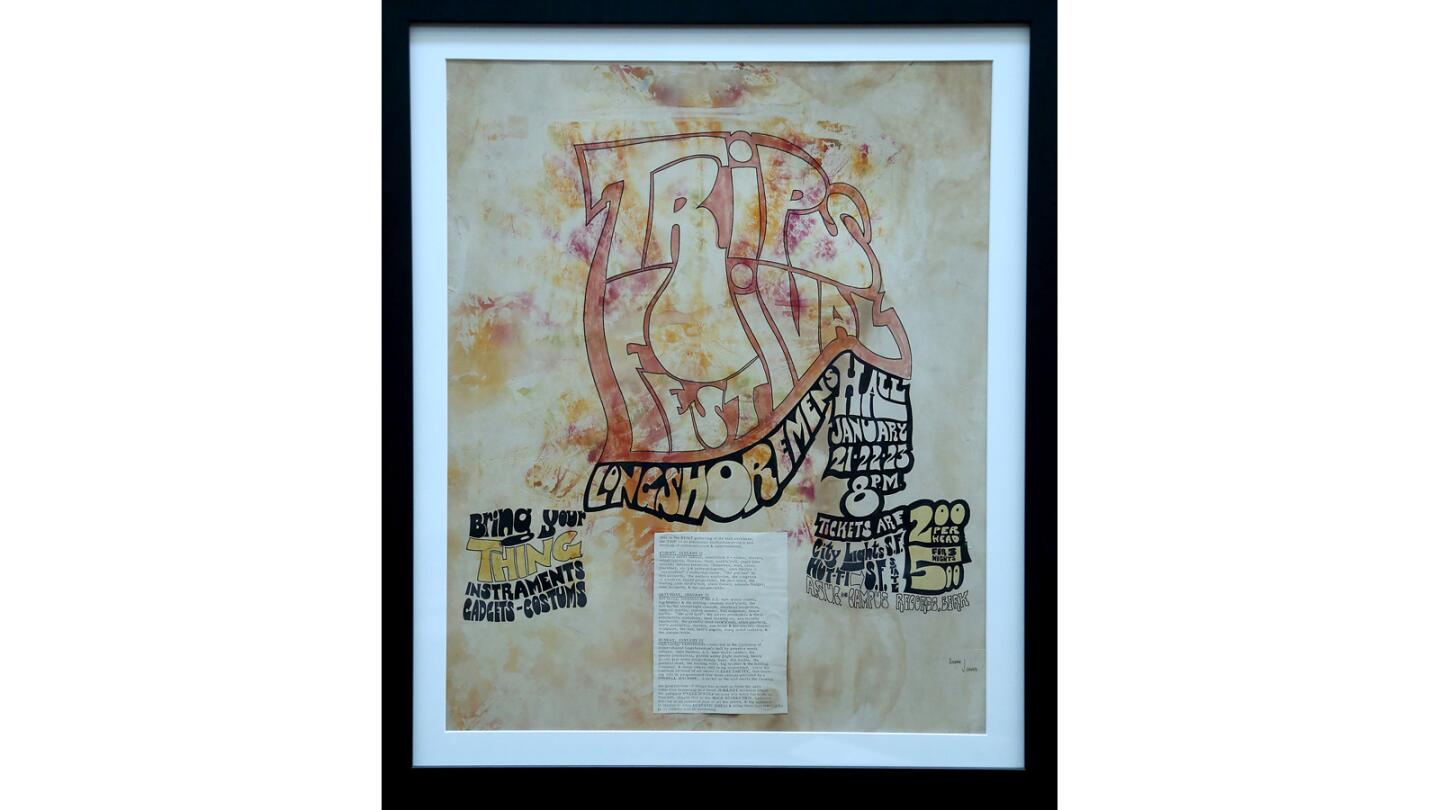
One of the many posters on display at the Bill Graham exhibit.
(Kirk McKoy / Los Angeles Times)Advertisement
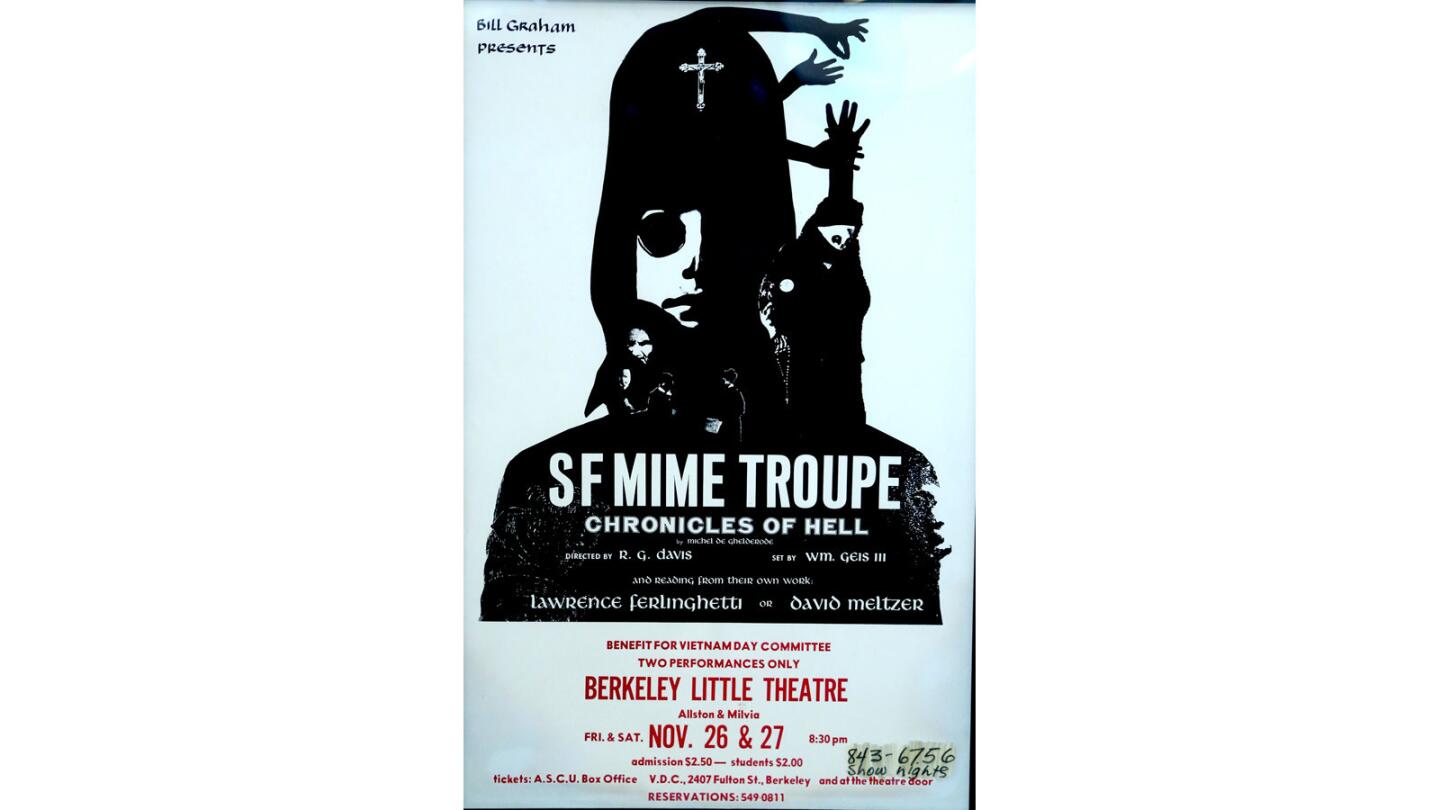
One of the dozens of original concert posters on display at the Skirball for the Graham retrospective.
(Kirk McKoy / Los Angeles Times)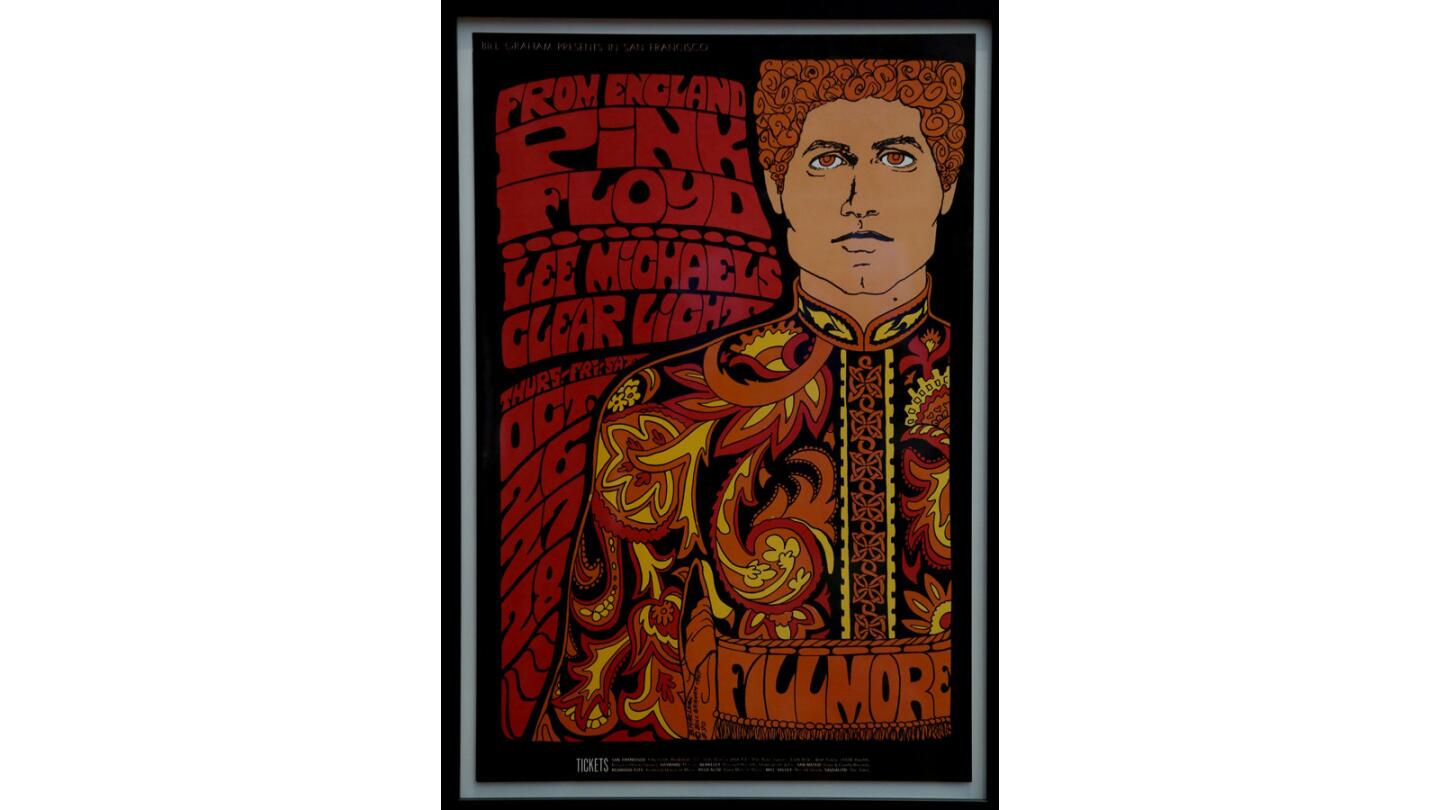
One of the dozens of original concert posters on display at the Skirball for the Graham retrospective.
(Kirk McKoy / Los Angeles Times)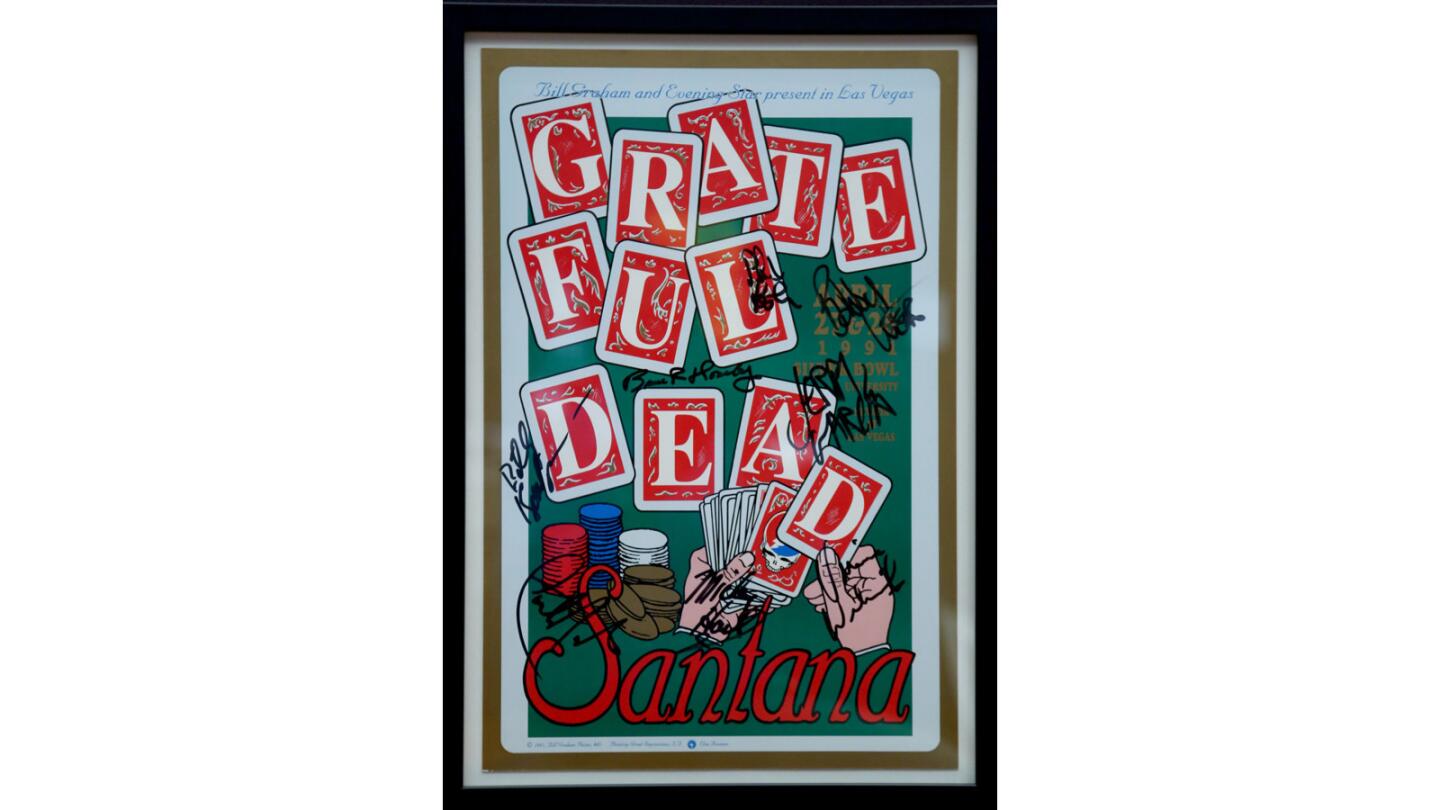
One of the dozens of original concert posters on display at the Skirball for the Graham retrospective.
(Kirk McKoy / Los Angeles Times)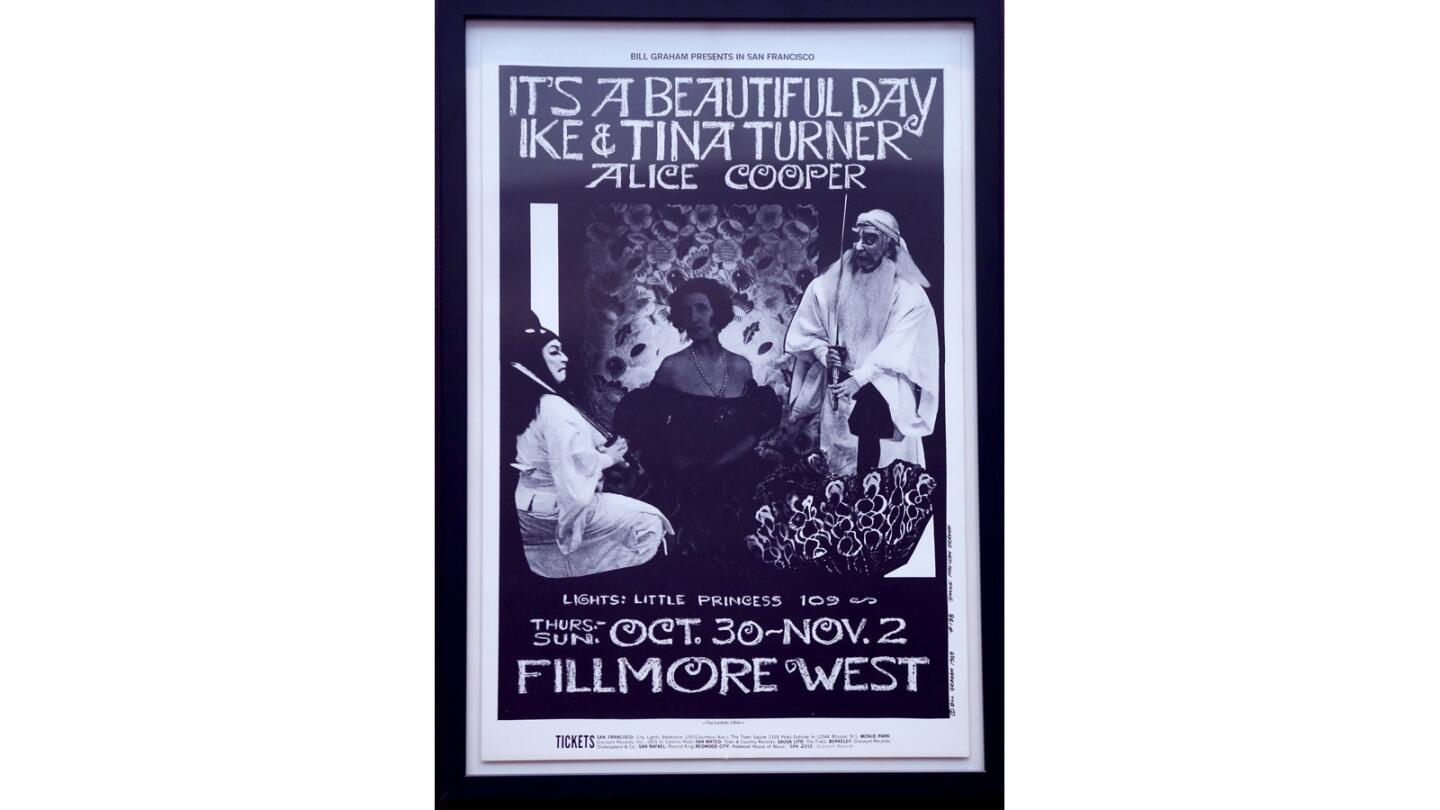
One of the dozens of original concert posters on display at the Skirball for the Graham retrospective.
(Kirk McKoy / Los Angeles Times)Advertisement
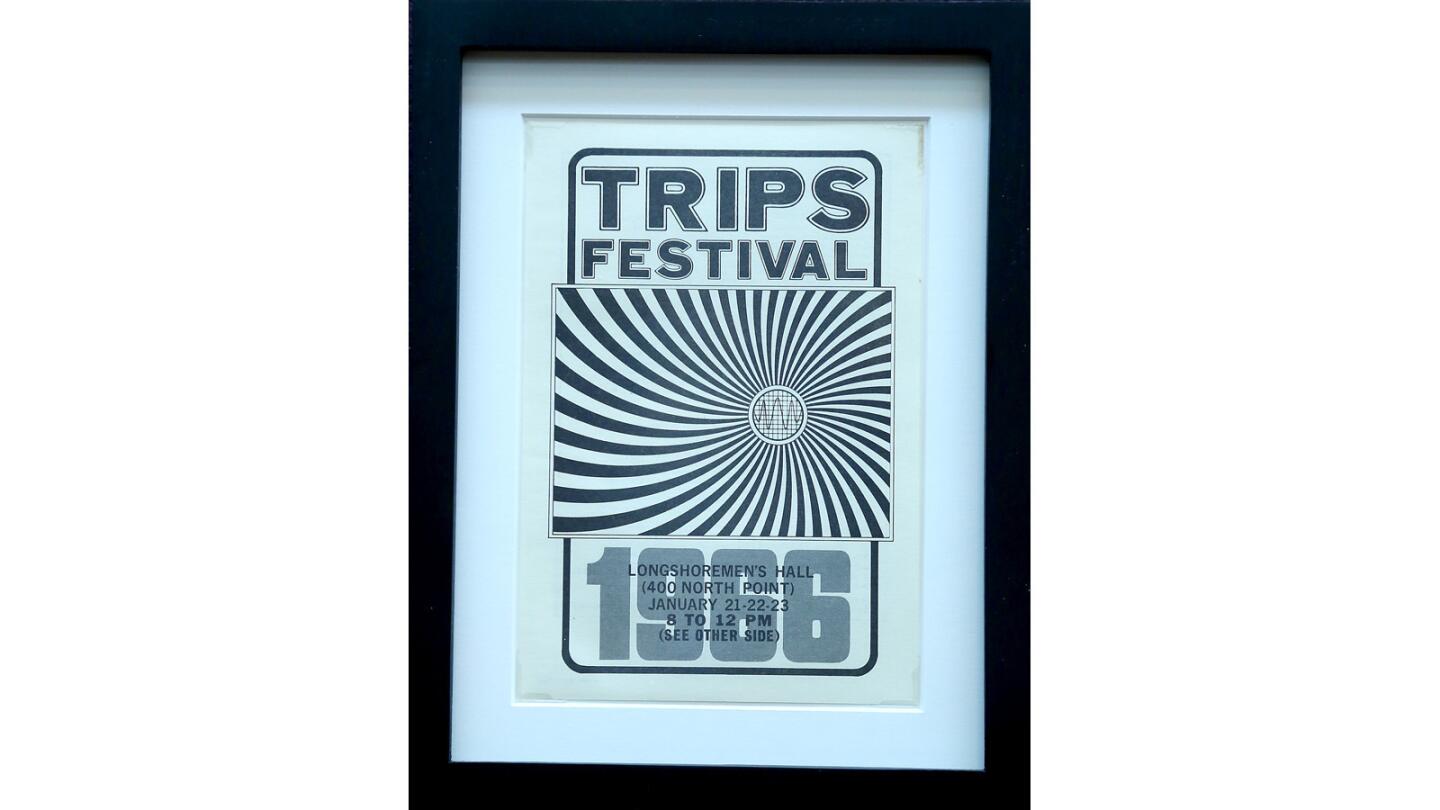
One of the dozens of original concert posters on display at the Skirball for the Graham retrospective.
(Kirk McKoy / Los Angeles Times)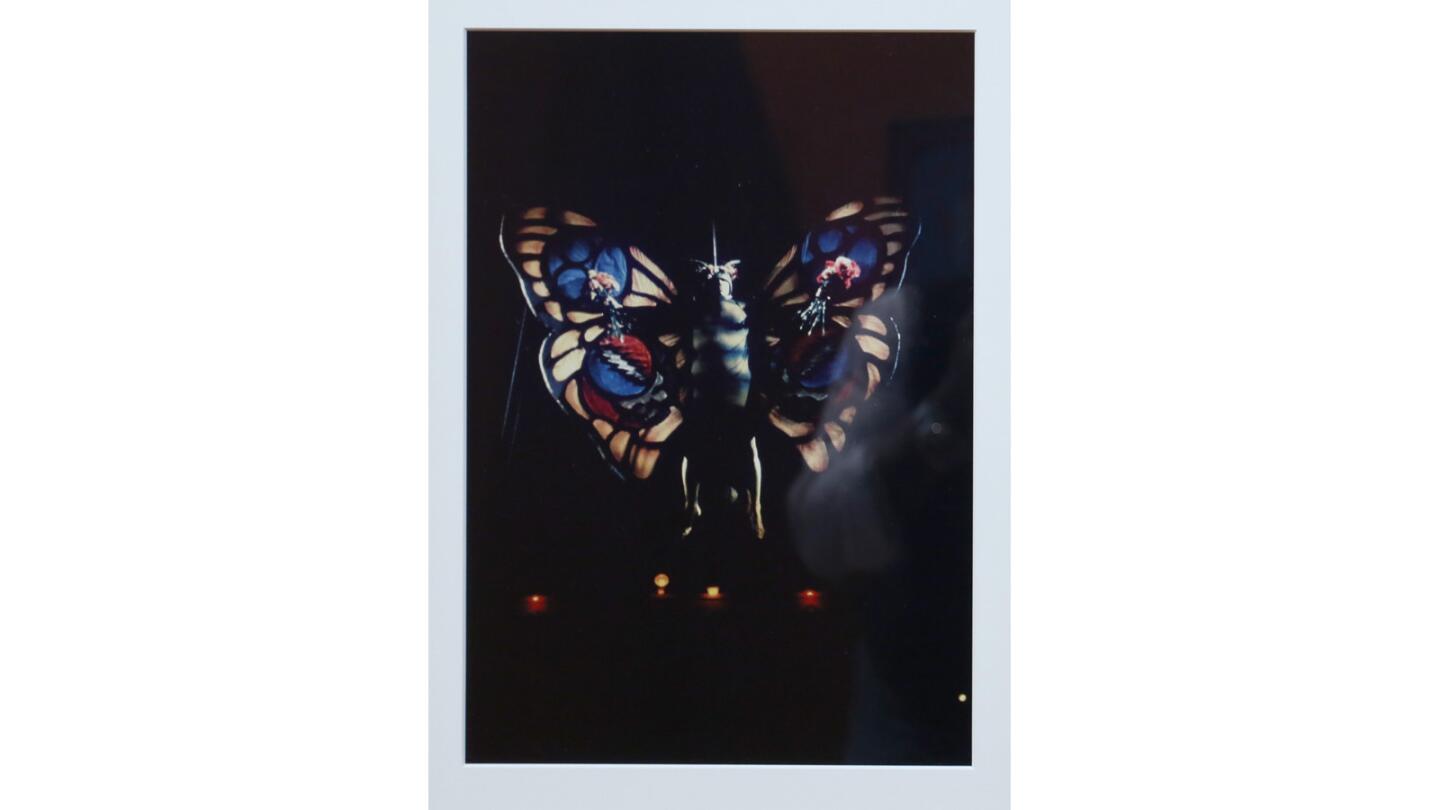
Bill Graham’s butterfly costume.
(Kirk McKoy / Los Angeles Times)




